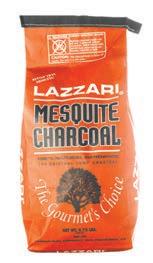






Last fall, a U.S. News & World Report article detailed the increasingly competitive nature of the American college admissions process, with more high school graduates vying for a finite number of premium institutions.
According to the National Center for Education Statistics, enrollment in post-secondary institutions increased from 25 percent in 1970 to 40 percent in 2014. Rising demand, limited supply, and high anxiety has prompted aspiring scholars to turn to commercial college counseling services to secure an extra application edge.
According to a recent report by the Association of Governing Boards of Universities and Colleges, income disparities between young adults who possess a college degree and those who don’t is growing. Early Baby Boomers who lack a college degree earned 77 percent of their graduate peers’ wages. Millennials of a similar age with just a high school diploma earn 62 percent of what their college-educated counterparts make. The report explained how strong demand for a college degree has translated into high tuition costs and a heightened concern about the invest-
ment paying off for students.
According to Elizabeth Stone, executive director of Campanile College Admissions Counseling, another driver of college counseling demand is the lack of adequate advisors at public high schools, where the ratio of counselors to students can be as much as 600 to one.
The Common Application, a nonprofit member organization launched in 1975, allows prospective students to apply to multiple schools through a single submission. Nearly 700 colleges now use the Common Application, a number that’s steadily grown over the years.
The cost of commercial college counseling services varies, averaging roughly $4,000, according to the Independent Educational Consultants Association, with some families paying multiples of that amount. One San Francisco parent with a daughter in public school, who asked to remain anonymous, spent $4,500 on Scholar Company, a counseling service based at 3407 Sacramento Street; her daughter ultimately applied to 15 schools. She found that the service lessened the anxiety associated with the process,
Last spring, a Tel Aviv University study of anti-Semitism in 40 countries found that violent anti-Semitic attacks declined in the past few years, while non-violent incidents, such as vandalism and hate speech, increased. The United Kingdom experienced an 11 percent jump in non-violent events between 2015 and 2016; American college campuses were identified as a “hotbed of anti-Semitism,” with a 45 percent uptick in non-violent occurrences over the same period.
Recently, The Jewish News of Northern California chronicled a series
of incidents at San Francisco State University, and the lackluster response from University president Leslie Wong, as a source of consternation among SFSU’s Jewish community. Students and faculty accuse Wong of contributing to a climate of institutionalized anti-Semitism, in which discrimination is implicitly condoned through a lack of disciplinary action and public condemnation.
Jewish advocates point to Wong’s disparate responses to anti-Semitic versus anti-Islamic incidents, his refusal to acknowledge that students
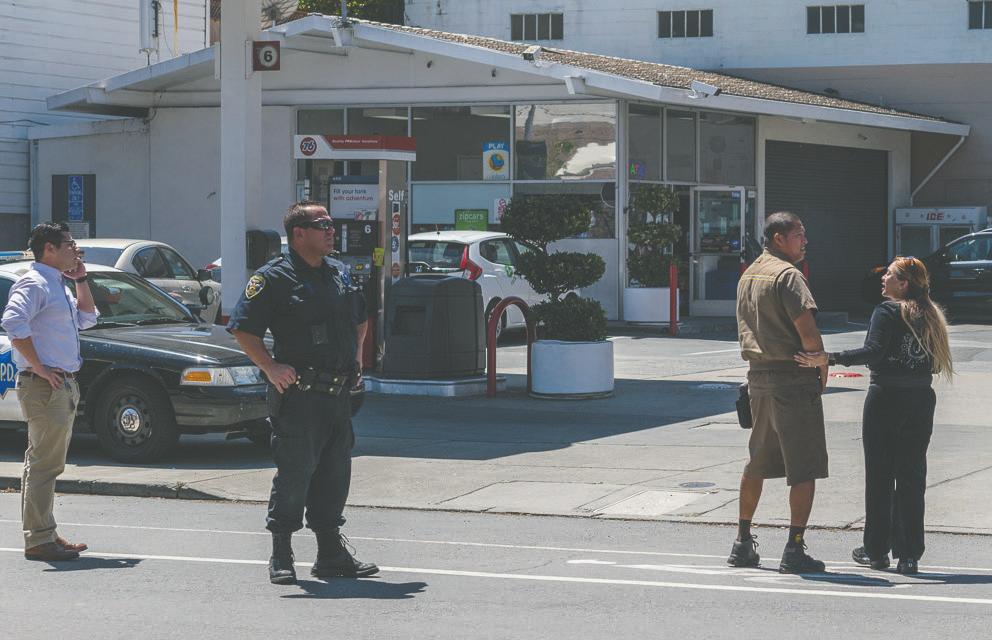
Beginning this month, premier members of the Bakar Fitness and Recreation Center, located at the University of California, San Francisco’s Mission Bay campus, will have to pay for the privilege of parking near the facility. When the Center opened in 2005, three hours of free on-campus parking was included with premier membership. These members now have to pay for parking, at a discounted peak rate – between 8:30 a.m. and 4:45 p.m., weekdays – of $2.75 an hour for up to three hours, $4 an hour thereafter; and for all other “off-peak hours,” $2.75 for three hours of parking, $4 an hour beyond that timeframe. Un-discounted parking rates for the general public are $3.75 for under an hour, $7.50 for one to two hours, $11.25 for two to three hours, and $15 for three to four hours. UCSF officials cited increased parking demand and growth in Mission Bay as the reason for the change.
Gym members aren’t happy with the new policy, and question the motives behind it. Greg Goddard, a Missouri Street resident, became a Premier member in 2006, attracted by the three hours of free parking, paying a special rate of $65 a month for those aged 60 and older. Goddard estimates that the
new parking fees will add $5.50 a day to his fitness expenses, in aggregate tripling the amount he spends monthly to workout.
“For seniors on fixed income, living in San Francisco, where the cost of living is astronomical, this is a severe strain on our budget to keep up our health and fitness,” expressed Goddard. “We feel this decision was made with no transparency, and discriminates against the disabled and seniors who joined the gym, the ease of parking being a prime factor in the contract. We would like to request an exemption for existing members who are disabled and seniors. We do not mind a reasonable fee increase of 10 percent, but to pay for the new parking fee increase will double or triple our costs.”
Goddard emailed his complaints to UCSF administrators and the Board of Regents, who responded by reiterating the policy change and rationale. The University had offered a $55 a month “Off-Peak” Premier membership for current members to help offset parking costs, an opportunity that expired last month.
Mary Jane Mikuriya, an 82 year old Mississippi Street resident, has been a Premier member since she was in her
Anyone who has spent anytime walking, bicycling, or driving in San Francisco lately knows that it’s a chaotic mess out there. Vehicles – Ubers; Lyfts – pullover abruptly to disgorge passengers, eyes leashed to their Smart Phones, in oblivious selfy-ness, appearing to believe that the zombieapocalypse has left them alone in the world, except for the bartender at their favorite mixed drink emporium at which they’ve been delivered. Luxury buses – Chariots; Bauer – careen down two-lane streets as if they own both of them, intermittently stopping mid-road like mules insisting on their mandatory 15-minute carrot break. Regular folk treat stop signs as suggestions, and left turn onto oncoming traffic in an unexpected game of chicken. Bikes buzz along like mosquitos, everywhere at once.
No doubt today’s traffic travesty is a commentary on the state of politics: abrupt, self-absorbed, in a hurry to a future which must – by vaunt of the intensity with which we travel to it – be way better than the present.
Still, there are rules, however loosely honored or enforced, some of which deserve a redo, all of which merit a mini-refresher course.
It’s against local laws to “doublepark.” However, under state code commercial vehicles can do the double when “reasonably necessary to accomplish the loading or unloading of merchandise or passengers.” While this loophole doesn’t apply on San Francisco thoroughfares with major transit lines – such as Mission Street – the rubber hits the road on double-parking when it comes to the definition of “commercial” and “reasonably necessary.” According to the Department of Motor Vehicles (DMV), “Any passenger vehicle used or maintained for the transportation of persons for hire, compensation, or profit is a commercial vehicle.” That, in turn, requires the vehicle be registered commercially. Taxis definitely do so; Uber, Lyft, and other ride-hailing services, not so much. Which is to say, an
Uber that isn’t registered commercially cannot legally double-park, ever.
Then there’s “reasonable.” Lyfts and the like regularly disgorge their passengers in the middle of the street, when just a few yards away the driver could’ve reasonably pulled closer to the curb. The solution to this behavior might be the very technology that gave us ride sharing: authorities should enthusiastically enforce the commercial vehicle requirement, track the spatial location of these transport pods, and automatically fine them when they unreasonably double-park.
Making a left turn in San Francisco can feel like a visit to the dentist: necessary but sometimes painful. Left turners are supposed to yield to oncoming traffic, as well as those turning right. Traffic flows best when the lefty carefully creeps out to the middle of the intersection, enabling those behind to continue straight, if that’s what they want to do, while increasing the chances that other left turners will make it through a greenlight.
Unfortunately, this isn’t what the DMV stipulates. Instead, that venerable institution instructs that to make a left turn one should “…stop behind the limit line. Look left, then right, then left again, and make the turn when it is safe.” This approach may work on a rural road, but in the City its practice unnecessarily slows circulation, and should be replaced with the carefulcreeping method, which those of us in our 50s were taught.
At a four-way stop, if two vehicles reach the intersection simultaneously, the vehicle on the left yields to the one on the right. Vehicles should concede to traffic and pedestrians already in or just entering an intersection, as well as to a vehicle or bicycle that arrives first. While a U-Turn in the middle of the street can be forgiven in no traffic conditions to grab a parking space, pretty much anywhere else in San Francisco it’s DMV-forbidden. Go
PUBLISHER’S VIEW continues on page 18

Last month, Dr. Frank Gilson , a local chiropractor, replaced Keith Goldstein as president of Potrero Dogpatch Merchant’s Association (PDMA). Goldstein sold his company, Everest Waterproofing and Restoration , in 2016. He’d taken over PDMA leadership from Philip De Andrade, owner of Goat Hill Pizza, and run it for a dozen years, during which membership grew from 30 to more than 140. Gilson has been involved in PDMA for almost a decade, serving as marketing chairman and vice president. Goldstein plans to dedicate his free time to playing his saxophone, travelling, supporting the nonprofit Nepal SEEDS, enjoying his grandchildren and staying involved in community organizations, including the Potrero Hill Festival.
won for his cocktail “Rail Punch,” with Breckenridge Bourbon, Blandy’s Madeira, Bing cherries, lemon, vanilla, absinthe, seltzer, and Angostura Bitters. This year’s competing chefs included Eric Nyeste of Smokestack at Magnolia Brewery, Tommy Halvorson of Serpentine, Chandler Diehl of Piccino, and Trevor Ogden from Park Tavern. The event raised $5,800 to provide heritage breed pigs to family farms. In October, Jordan and Lyon will compete in the national final, Grand Cochon, held in Chicago, for a four-day wine experience in Rioja, Spain’s most iconic wine region.
Chariot began providing rides from Potrero Hill last month, the first service expansion by the commuter shuttle service since it added a Mission District route in 2016. Chariot is owned by Ford Motor Company

Cochon555 named Chef Jordan Keao of ‘Aina San Francisco’s “BBQ King” at an event held at Magnolia Brewing Company last month. Keao served the Large Black breed of pig raised by Wendy and Duane Massa, Massa Natural Meats. Marie-Louise Friedland, State Bird Provisions, took home honors in the Somm Smackdown competition for her wine/pork pairing of a Château Yvonne, 2015 Saumur Chenin Blanc – Saumur, Loire, France, while barkeep Jeff Lyon, Third Rail,
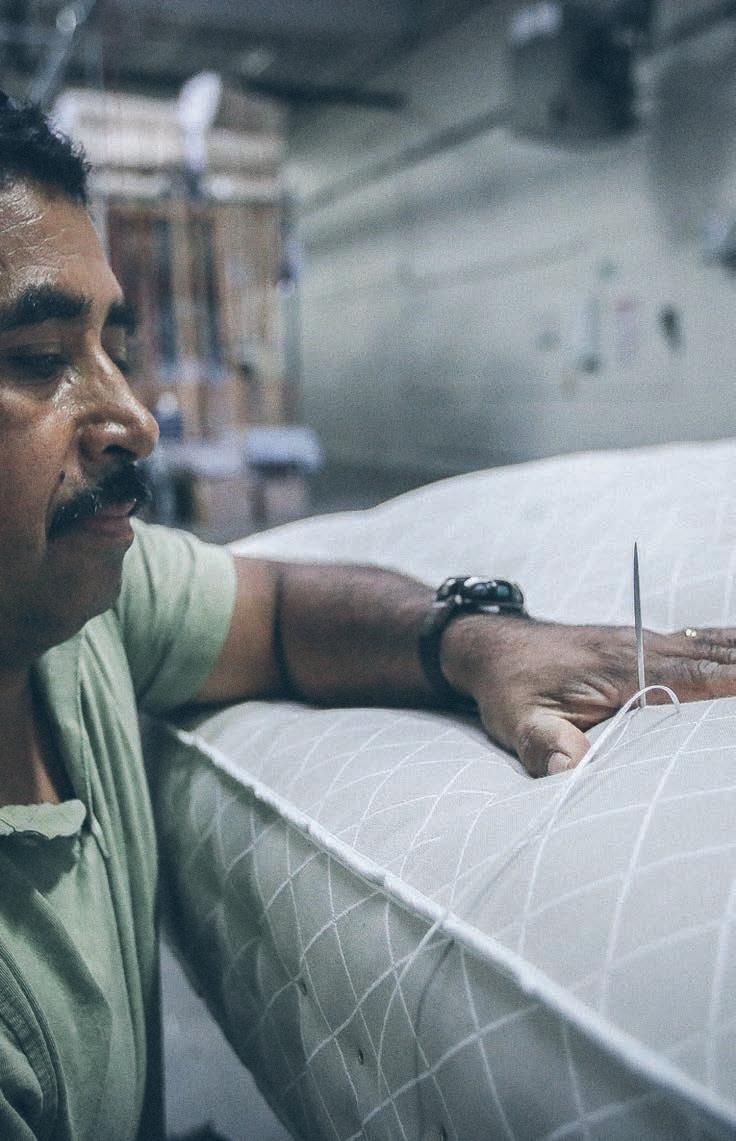


 Editor,
Editor,
the space’s historical aspects.
I came across the May issue and an article by Brett Yates on myself and my husband’s new restaurant, Glena’s, in Dogpatch (“A Day in Dogpatch, Potrero Hill, and Environs”). I find it very unfortunate that no one reached out to us for this. We’re Potrero residents, and just became a family of four in May.
We know people are sad to see the New Spot go. However, we’re so happy to be contributing to our neighborhood. The “weathered aesthetic” that Yates mentioned we “redesigned” is in fact the original lath that was hidden behind the New Spot’s drywall, and original floors from 1904 that we were able to salvage. We were able to keep
We’re using the best ingredients we can find, and now have a full bar. We’re also offering a hybrid of service, with fast causal and full service at the bar. One doesn’t clear their own table, and there’s someone always on the floor to come to your aid.
The article speaks a fair amount about tipping. Again, we have our reasons, and would have loved to speak with someone personally. All in all, we’re local business owners who live on the Hill and read The Potrero View, but find it disappointing that no one bothered to reach out to us.
Stephanie Gaines 20th StreetOn April 15, Rodney David Mann died at the age of 42 at a home on the 500 block of Vermont Street. Authorities reported that Mann was at the residence for less than a day, visiting a friend who lived there. According to Catono Perez, Liberty Hill resident and friend of the deceased, Mann had previously lived in Utah and Palo Alto, but frequently stayed in San Francisco
at various hotels. Perez knew Mann for about three years, and had recent contact with him, but was unaware of what caused his friend’s death.
“He was a really fun and energetic guy,” reflected Perez. “He was always forward thinking and willing to improvise, very spontaneous. He would really think on the spot. He was an entrepreneurial type with something new always going on, and had been working on documentaries and was
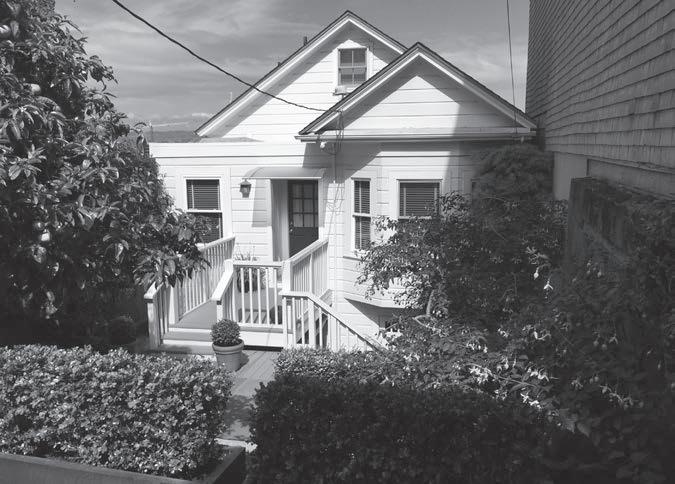
involved in the cannabis industry. He was living a fast life. Because of health complications he ended up going to the emergency room frequently.”
Perez described Mann as someone who lived life fully, appreciated each moment, able to bounce back easily from setbacks. He said that Mann came from a devout Mormon family, and although he no longer adhered to the faith, was on good terms with family members.
San Francisco Police Department Officer Robert Rueca said that the department received a report of a deceased person at 4:46 p.m. on April 15. Police units arrived at the Vermont Street residence shortly after, and located Mann, who was pronounced dead at the scene. The Office of the Medical Examiner was then contacted to assist.
“There had been a 911 call made that afternoon reporting of a deceased person,” Rueca explained. “He is not identified as a person living at the residence, but we don’t know where he was visiting from. The cause of death stated in the initial report was ‘not determined’ but it’s not being looked at as a suspicious death. No crime was committed that caused the person’s death.”
According to Thomas McDonald, Office of the Chief Medical Examiner chief investigator, the death was “drugrelated and still being investigated.” Another medical examiner investigator subsequently said that the time of death was 1700 hours, and that the report is still being drafted pending toxicology results, which could take up to six months to complete.
According to the National Association of Medical Examiners, 90 percent of coroner reports should be completed within 90 days of an individual’s demise. However, National Center for Health Statistics data suggests that death certificates for drug-related losses take longer to issue compared to other causes.
On June 5, The New York Times reported that 2016 saw the largest annual increase in drug overdose deaths in the nation’s history. The jump was due to rising rates of opioid addiction exacerbated by the emergence of illicit synthetic opioids, such as fentanyl and carfentanil, which are dramatically more potent than heroin. According to Brian Peterson, National Association of Medical Examiners president, the larger number of overdoses has created a national shortage of forensic pathologists, straining associated resources.
“The issue is nationwide, in the sense that the same limited number of forensic pathologists, toxicologists, and investigators have to handle a markedly increased workload. This has already had an impact on office accreditation and burnout,” Peterson commented.
A Vermont Street resident, who spoke anonymously, said that when he arrived home the afternoon of April 15 he saw an ambulance parked on the street with emergency flashers on, though the paramedics were sitting idly in the vehicle. When he asked the paramedics about the situation, they responded ambiguously. The ambulance then left, replaced by a medical VERMONT continues on page 18



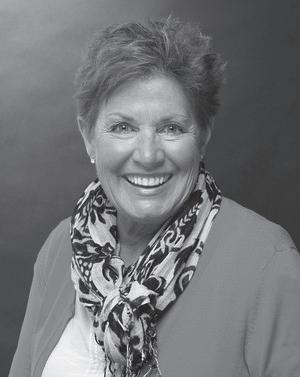
Last spring, the San Francisco Chronicle reported that Potrero Hill’s and Dogpatch’s combined population is expected to double over the next two years, due largely to “a proliferation of upscale apartments.” Since 2008, when the Eastern Neighborhoods Plan was adopted as a means to increase the City’s housing supply by converting industrial spaces to residential uses, Southside residents have been concerned about deficits in public transit, open space, community services, and retail that might hinder healthy accommodation of large waves of newcomers.
Advocacy groups – including the Potrero Boosters, Dogpatch Neighborhood Association, and Grow Potrero Responsibly – have pressured developers to limit damage to the community fabric, and make positive social and aesthetic contributions to the neighborhood. Developers working in the area – such as Equity Residential, which owns Potrero 1010 and One Henry Adams; and Related California, whose 1601 Mariposa complex will front Jackson Playground – have taken various approaches to appeasing their new neighbors, or, occasionally, ignoring them. Each project has emerged as a case study in the negotiation of a particular set of challenges faced by large-scale apartment and condominium buildings erected in an urban landscape once dominated by a binary of single-family homes and industry.
Last fall, at 338 Potrero Avenue, the real estate company Trumark Urban unveiled Rowan, a condominium building designed by Handel Architects, the firm responsible for the developer’s Pacific Heights multi-family palace, The Pacific’s $15.872 million grand penthouse made headlines for breaking a price-per-square-foot sales record previously held by South-of-Market’s Millennium Tower. On the border of Potrero Hill and the Mission District, Rowan houses 70 for-sale units, ranging from 654 to 1,277 square feet. More than sixty-five percent of the units have been sold, at prices between $700,000 and about $2 million. Homeowner association fees add $600 to $800 a month. Eleven below-market-rate units were
priced, without parking, between $250,000 and $300,000; all have been purchased.
An underground garage featuring a stacked automated parking system has 40 spaces for cars; bicycle parking is more plentiful. Built on the site of an abandoned carwash, Rowan has a rooftop deck, second-floor “Zen garden,” and 2,200 feet of ground-floor retail space that’s yet to be occupied.
Alone among the new residential developments in and around the Hill, Rowan was architecturally conceived as a vertical downtown condominium tower rather than an outer-neighborhood housing complex. In order to secure a height permit, Trumark Urban added more below-market-rate units to the building; 16 percent. San Francisco requires new residential construction of 10 or more units to rent or sell 12 percent of the homes below market rate, a stipulation that developers circumvent by building BMRs off-site or paying a fee, the route taken by Onyx at the Park on 17th and De Haro streets.
For Rowan, Trumark Urban focused its community outreach on the recreational space immediately adjacent to the property, Franklin Square, forming a relationship with the volunteer group, Friends of Franklin Square, contributing $50,000 to the construction of a new artificialturf soccer field that debuted last fall. Rowan staff organize quarterly cleanup days at Franklin; $15 of each homeowner’s monthly HOA fees go to park maintenance.
The Chronicle’s architecture critic, John King, enthusiastically praised Rowan’s “efficient strength” and “muscular exoskeleton,” while admitting that, as a “nine-story concrete box,” it “might seem startling at first glance.”
Although the building’s external structural supports form a zigzag pattern over a glass façade lined by Juliet balconies, the overall impression it gives isn’t one of lightness or whimsy.
Stuck between a McDonald’s and a gasoline station, Rowan looms like a colossus over Potrero Avenue’s humble dishevelment. For Handel Architects, fitting the building into the neighborhood’s existing texture, which includes a tire seller and the Potrero Center on
16th Street, probably wasn’t a good idea. The solution, evidently, was to allow the building to stand out, boldly and forthrightly, as an unapologetic fortress of gentrification; a stylistic embodiment of domination that cops visually to the tension of its surroundings with fearsome gusto.
The building’s north and southward sides are composed of huge, faceless concrete panels, as if deliberately shunning the businesses on either end. From the street, the impressive edifice registers almost as an act of hostility, though not as a work of mid-century brutalism. The structure feels modern, sleek, trendy. Those qualities carryover to its interior: the German painting of a smashed-up luxury coupe that decorates the lobby; silver boxes cum elevators; the striking contrast between ultra-dark hallways and the brightly lit, stunningly quiet – thanks to stateof-the-art acoustic engineering and four layers of walls between homes – condominiums they serve.
Rowan isn’t Trumark Urban’s only project in the area. The Knox, a 91-unit condominium complex with 11 BMRs, celebrated its grand opening last spring at 2300 22nd Street. Prices – $750,000 to about $1.9 million – are roughly the same as Rowan, with marginally lower HOA fees. According to Trumark Urban, it’s attracting a slightly older demographic. Its location, in a quiet southeastern pocket of the Hill, is more removed from the urban hustle and bustle. Thanks to its proximity to the Caltrain stop, its units – which range from 481 to 1,480 square feet – have been selling briskly, with 60 percent already sold.
The Knox’s slightly less edgy location allows for a significantly less edgy architectural design by BDE Architecture, with five stories of gray, white, and brown boxes, alternatingly set back and pulled out to create “texture,” wrapping from Texas Street
around 22nd to Mississippi, evincing an aesthetic markedly warmer – and, arguably, blander – than that of the sturdier-looking Rowan. The U-shaped complex centers on a secluded internal courtyard of private patios and shared spaces that’ve been planted with flowers meant to attract California’s endangered butterfly species, two of which have made a home in The Knox’s garden.
Traditional amenities, absent at Rowan, include a fitness center and clubhouse. The condos’ interiors resemble those of its Potrero Avenue sibling: the same attractive gas stoves, “arctic quartz” countertops, and slick style of handle-free cabinetry. The building’s later completion date seems to have permitted inclusion of a few of the newer fads in interior design and gadgetry: trough sinks and inconspicuous “dual-strip drain systems” on shower bottoms that sit flush with bathroom floors. The parking ratio for cars is higher, with 75 percent of units getting spots in the underground garage; bicycle storage is allotted for every unit.
Taking into account The Knox’s Dogpatch-adjacent location, Trumark Urban reached out to the Boosters and DNA for input during the design process, securing approval of both groups. Boosters president J.R. Eppler recalled four meetings with Trumark Urban. “On each of those presentations, feedback was given, and certain aspects were incorporated in the next iteration that we reviewed,” he said.
One Boosters victory was convincing Trumark Urban to incorporate a small, as yet unfilled, retail space on the building’s ground floor. The units’ configurations made for another point of discussion. “The City requires a certain unit mix in an Eastern Neighborhoods project, and a project can



 BY MICHAEL IACUESSA
BY MICHAEL IACUESSA
Residents of a housing development which opened on 2660 Third Street last month will have few excuses if they can’t tie a bowline, sheet bend or rolling hitch knot. That’s because the building pays homage to the Tubbs Cordage rope company, which operated on the site from 1856 to 1962.
Founded by Alfred L. Tubbs, a New Hampshire native, the company, which largely sold nautical rope, became the first cord manufacturer outside New England, and was the largest on the West Coast for most of its existence. At its height, it had 500 employees working at plants across the country, with $33 million a year in sales.
The new 263-unit building, dubbed “Abaca” in honor of the hemp-like plant Tubbs began importing from Manila in the 1920s, features a 10,000-square foot public boardwalk that serves as a museum for the site’s history. There are plaques honoring the rope company, a large steel table on which artisans can pound metal, and a kiosk with a rope-tying station where the public can learn the aforementioned maritime knots. The boardwalk and landscaping are slated to be completed this month.
“Every project we have done in San Francisco, it has been important for us to get a sense of context in the neighborhood, and we know Dogpatch has its own sense of history,” explained Jesse Herzog, chief investment officer for the developer, AGI Avant. While the parcel isn’t designated as a historical site, he added, “To us it was important enough that we felt it was a story that should be shared.”
The boardwalk allows pedestrian access between Third Street and Angel Alley, which connects the north and south sides of Tennessee Street. The alley, which recently was transformed into a street park, is dubbed after the Hells Angels headquarters that abuts Abaca.

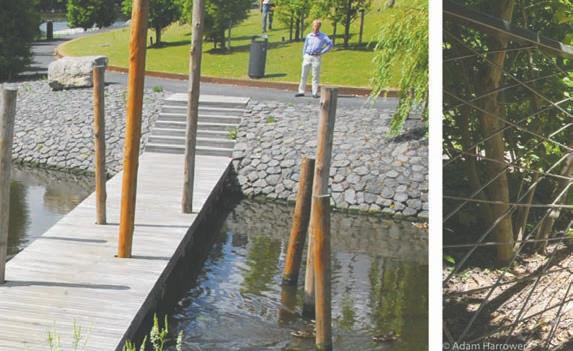
The boardwalk follows the same path as the Tubbs Cordage’s rope walk, where long strands of fiber were laid out and workers went back and forth to twist it into rope. The original walk consisted of a wooden enclosed structure that extended 1,000 feet over mudflats, connecting to a shipping wharf in the bay. At one time the company made rope by the mile. The presence of the rope walk is why the buildings to the east now aren’t on the street grid.
“The block where Tubbs Cordage was, it used to be waterfront property,” said Herzog, who explained that the coastline ran diagonally through the new building’s location. “Third Street was actually the Bay, and that’s where boats would land.”
Much of the ode to the site’s history is obvious, such as posts that recall pilings on a pier; a rope sculpture made of abaca hemp, and signage. Other elements, however, are subtle. For instance, the building is painted blue on the Third Street side to reflect where the Bay was; green on the southside where marshland existed; and red on the Tennessee Street side, chosen to connote the industrial city. The colors were part of the building design of Anne Fougeron, a noted architect whose recently completed condominiums at 400 Grove Street won a Best of Design Award from The Architect’s Newspaper
The boardwalk is modeled by landscape architect David Fletcher, who just finished a redesign of South Park. Like that conception, instead of traveling a straight line the boardwalk winds and traverses different levels. The higher level is at Third Street; visitors descend down a wooden ramp to a plaza at Tennessee Street.
“When you walk down that ramp you are actually in history,” said Fletcher, of his favorite part of the design. The ramp is actually a wooden bridge over greenery that extends on
both sides or, to the imagination, the marsh that once existed there and the old Long Bridge that connected that part of Dogpatch with the rest of San Francisco. The greenery also serves as a rain garden, with water collected off the roof of the Abaca building draining into it.
In addition, there’s what Fletcher described as a “perforated metal image” on a wall along the walk. Conjuring modern art, the shiny decor is meant to represent the ghosts of history. And, in what might not be immediately evident, the orange railings are an ode to the Golden Gate Bridge. Tubbs Cordage made the safety rope that was used during bridge construction.
Fletcher said he used metallics and blacks in the boardwalk’s overall décor “so as to immerse you into a sense of industry and the turn of the century when Tubbs Cordage was in its heyday.”
The Tubbs Cordage Company moved downstate to Orange in 1962,

where it remained in the family until it was taken over by an employee in 1986. Three years later it moved to Tucson, Arizona, where it still exists. The original buildings in Dogpatch were razed the year the company left.
Rents at Abaca range from $2,800 for a studio to $5,875 for a three bedroom. Thirty-four units are reserved as affordable housing, with studios offered for $991; $1,391 for the lone three-bedroom.
Abaca, the plant, is among the strongest natural fibers, making it appealing for rope. It was one of the Philippines’ three top cash crops, along with sugar and tobacco, around the turn of the 20th Century, which is why Tubbs Cordage opened a subsidiary, the Manila Cordage Company, in that country from 1923 to the early-1970s. It now has wider uses, such as in cloth for sacks, by the paper industry for tea bags, stencil paper, and is in the Japanese Yen currency.



The Olympia building, 600 20th Street, has been a notable presence in Dogpatch for more than a century, though arguably not as historical as its namesake. The structure was named after the U.S.S. Olympia, built across the street, at Pier 70, which was the flagship of Commodore George Dewey at the Battle of Manila Bay during the Spanish-American War of 1898.
The building originally consisted of a restaurant-saloon on the ground floor, shipyard workers’ housing above.
The Syme Family purchased the property roughly 100 years ago. They demolished the initial edifice in the early-1970s, erecting in its stead a cinderblock warehouse structure.
The Syme’s had a “soft spot” for the property, given the family’s long history with it, according to John Borg, owner of Eco Imprints and the building’s master tenant. However, the property became too much for them to manage. Last year, the longtime owners sold it to Ronaldo J. Cianciarulo, of Mindful Investments, L.P..
Borg’s lease extends through 2022; he has no intention of leaving before his contract expires. In addition to Eco Imprints, the structure houses Jim’s Smoke Shop and Specstones Studio,
which sublease space from Borg. “I have five years left on my lease,” he said. “I have been in the building over 25 years. I run a design and production business here.”
Sometime after 2022, when Borg’s lease expires, the building will be razed by Bay Area developer Workshop1 to make way for a six-story edifice, with ground floor retail, basement parking garage and two dozen condominiums averaging roughly 800 square-feet each.
“We are among the last remaining old warehouse-type buildings left in the neighborhood,” Borg said. “Sign of the times.”
Borg would know. He was instrumental in crafting a string of successes that led to Dogpatch’s recent boom. He
helped draft the Port of San Francisco’s comprehensive Central Waterfront Land Use Plan to revitalize the Dogpatch and Mission Bay coastline, cofounded the Dogpatch Neighborhood Association, and served on the Potrero Power Plant Citizen’s Task Force, which laid the groundwork for decommissioning that generating station.
“I am proud of the small role some of us played in shaping what it is today,” he said. “There is often more to a simple story like this, and it can sometimes be forgotten that people, families and businesses who make plans based on clear terms can be impacted when new parties with other agendas get involved.”
Laborer’s International (LIUNA)
Local 261, a 5,200-member public and private sector construction and general
laborers union that serves Marin, San Francisco, and San Mateo counties, celebrates its 101-year anniversary this year.
“Local 261 is a construction union in which the doors swing wide open. It really is primarily an entry-level organization, where you see all races and genders,” said Vince Courtney, the Union’s recording secretary.
The chapter, which has its hall at 3271 18th Street, includes journeymen from a wide variety of trades, including gardeners, concrete hands, and general handymen. Local 261’s members work for Plant Construction, Webcor Builders, San Francisco Unified School District and San Francisco Recreation
and Park, among others. Some LIUNA members repair and maintain residential complexes where they live or schools that their children attend.
Local 261 is closely tied to the Southside. Its members have worked on a number of notable projects in the area, including the chapter’s own union hall, Family House, Inc., at 540 Mission Bay Boulevard North, several Mission Bay apartment buildings currently under construction, and the 20th Street historic buildings that Orton Development is restoring at Pier 70.
“Local 261 was chartered on January 3, 1916,” said David de la Torre, the chapter’s secretary-treasurer, who is part of a third generation of union members and officers. “When it was first started, it covered only the City and County of San Francisco. The members were mostly street sweepers and…” workers who carry bricks and mortar to support a bricklaying team. “In 2012, it merged with two other locals in Marin and San Mateo. My father, Mario de la Torre, got in and stayed in office [as union president] until he retired. He was part of the big Latino movement in the Mission District…previously Irish and African-American.”
De la Torre said his paternal grandfather and uncles on both sides were Local 261 members. His brother, Oscar de la Torre, has served as president.
“We represent gardeners in Golden Gate Park, maintenance workers with Muni, and street cleaners with Department of Public Works,” said Theresa Foglio, one of the chapter’s city managers. “We also service the homeless community and clean-up efforts for events such as Superbowl 2016.”
“We have pre-apprenticeship and apprenticeship programs that are jointly administered with the City, where youth can learn the skills for the job while they are still in school,” said Courtney. “These programs are
LOCAL 261 continues on page 18

In anticipation of this month’s day of activities, I had the best haircut of my life at Dogpatch Barber and Shave. Not by my own reckoning but, more importantly, according to my wife, who, as she’s known me since I was 12, could be considered an authority on the subject.
I’ve spent the last decade and half mostly looking like a floppy-haired goofball, unable to bind myself to an adult hairstyle. Jan Galang, one of four barbers at 2632 Third Street, had the foresight to disregard my instructions to continue my shaggy dog look, and instead sculpted the mess atop my head into a cleaned-up, delicately textured expression of seemingly natural masculinity.
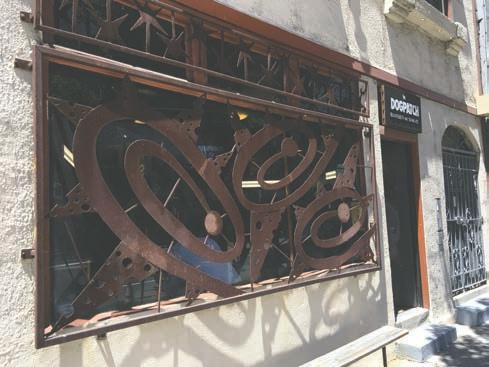

Dogpatch Barber and Shave serves both men and women, though Yelp reviews suggest male customers outnumber female ones. At $40 a cut, prices aren’t low, but the place has a neighborhood vibe that doesn’t feel excessively professionalized. It seems like the type of spot where the barbers’ friends might stop in for a conversation on a day when they aren’t getting a haircut.
Sporting my new style, I started my day in earnest. Although Dogpatch and Potrero Hill are indelibly linked in San Francisco’s popular imagination – more closely even than other pairs of adjacent neighborhoods that aren’t separated by a grade – I sometimes wonder how often the residents of the former have the energy to trudge up the 18th or 20 Street overpasses from Third Street to enter the Hill’s slightly sleepier world. Still, the communities make sense together precisely because of their differences: where Dogpatch is the exciting Wild West boomtown of technology innovation and urban redevelopment, Potrero Hill is the idyllic, comforting hamlet of smiling schoolchildren and Victorians. More specifically, if the Hill’s 18th Street commercial corridor is like an adorable small town, the businesses around 20th Street create the atmosphere of a remote mountaintop village. Yet there’s plenty to do up there; does the rest of the neighborhood know about it?
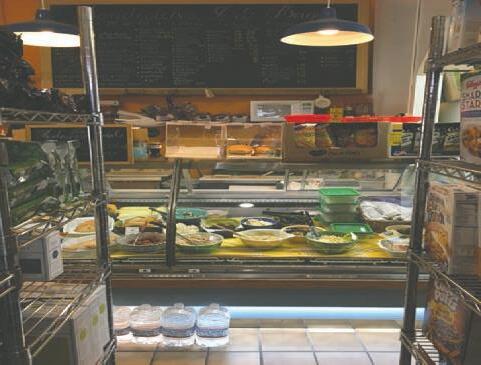

By elevation, the highest commercial enterprise in Potrero Hill is Chiotras Grocery, 858 Rhode Island Street, between 20th and Southern Heights Boulevard. It’s one of four corner markets on or above 20th that make life a lot more convenient for Hill dwellers. Where the other three crowd together in the east, Chiotras Grocery sits alone at the western summit. Even though it’s been around for nearly a century, it comes across as a local secret. It’s the only grocery store on the Hill’s north slope that has a deli counter, in addition to shelves of household staples, snacks, and beverages. For lunch, I often pick up a sandwich there, usually with Toscano salami, soppressata, mortadella, or some other exotically rustic Italian meat.
I haven’t even put my name on the (lengthy) waitlist for membership. In my Hill reality, I don’t know the first thing about gardening, and am too lazy to learn. But the most wonderful thing about this exclusive-looking fenced green space, which must know that it’s one of the most beautiful locations in the whole City, is that its retained its modesty: it openly welcomes all of us who don’t quite deserve to be there. Picnickers are common, yet, owing to the elevation, not so common that you have to wait in line for a seat on the wooden bench.
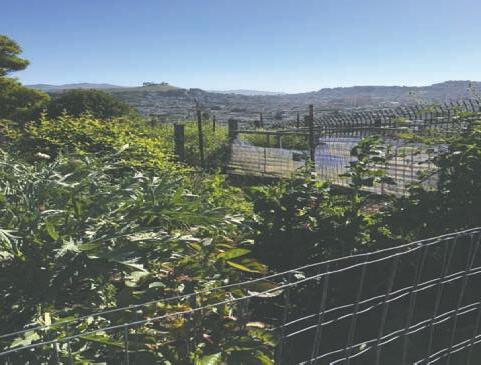

My next favorite place on the Hill’s north slope is the Potrero Hill Recreation Center, 801 Arkansas Street. This park, a popular site for children’s birthday parties and barbecues, is a miracle, in part for its no-wait tennis courts, where players enjoy expansive Bay views as much as the game itself. Even more impressive is the basketball gymnasium. Where else can one find so much free open gym time on a full-sized indoor court? The schedule varies month to month, but typically, from Tuesday to Friday you can find pickup games around lunchtime and again between six and nine in the evening. On Saturdays, if no other event is scheduled, pickup runs from 9 a.m. to 5 p.m.
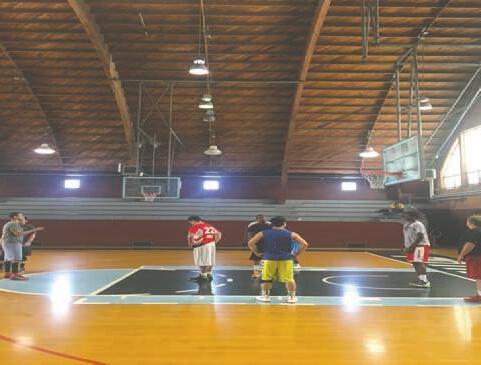

There’s usually a good crowd. What may begin as five-on-five on the regulation court will transition into two crosswise four-on-four games as more players arrive. Relative to most of the regulars, I’m pretty bad at basketball, but no one seems to mind. Thanks to its location at the top of Arkansas, the Rec Center is one of the only places where the largely separate universes of the Hill’s north and south slopes truly converge. Though generally all-male, it’s otherwise a genuinely diverse bunch of teenagers, young professionals, middle-aged dads, and oldsters who still have a trick or two up their sleeve. There are still a few photographs of O.J. Simpson posted on the walls.
Lest you risk altitude sickness, head back down to sea level for dinner. If you’re trying to keep your finger on the pulse of the local restaurant scene, go to Dumpling Time, 11 Division Street, which opened last spring in the Design District. What sounds like a Richmond hole-in-the-wall is in fact the trendiest operation yet from Kash Feng’s Omakase Restaurant Group, which has already set up a mini-empire of Asian cuisine in the area with Japanese restaurants Omakase, Okane, and Live Sushi Bistro. Here, Feng expands his range and narrows his focus. Dumpling Time’s recipes come primarily from Chinese cuisine, but despite a small selection of vegetable side dishes, it’s really all about that dough, from har gow to xiao long bao
Chiotras has a small outdoor wooden deck in back where you can eat. If you don’t mind walking a little farther, you might instead take your sandwich to the Potrero Hill Community Garden, 752 San Bruno Avenue, where amidst 51 small plots of fruits, vegetables, flowers, and chickens, a couple picnic tables invite visitors to enjoy the splendor. My earliest Potrero Hill memory involves the Community Garden: I was a tourist in San Francisco a few years ago when I visited 18th Street to experience the blog-famous brunch at Plow. Discovering that the wait would be about 36 hours, I decided to wander the neighborhood, and found my way to the oasis of sunny Mediterranean lushness at 20th and San Bruno. Marveling at the view over the Mission to Twin Peaks, I imagined what it’d be like to live in one of the lovely nearby homes on this tranquil hilltop and daily tend my own plot of dirt and vegetation clinging to a cliff above Highway 101.
I didn’t think it’d ever happen, but my Potrero Hill fantasy revolved around the garden, and it stuck with me. Now that I somehow actually live here, though,
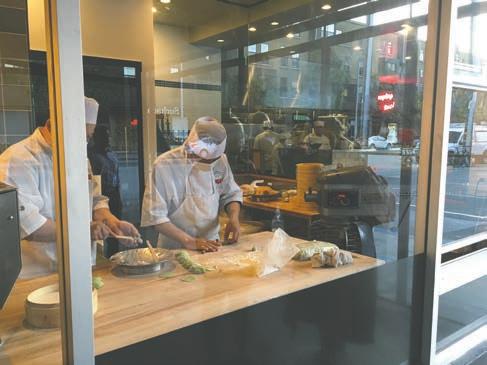
The dining experience at Dumpling Time is a little weird. Wait times are long on weekdays and weekends alike, for lunch and dinner, which means standing outside beneath a speaker blaring pop music and a sporadically functioning heat lamp before entering a crowded and incredibly noisy interior. The service is scattered – my dessert buns showed up in the middle of the meal – and the dumplings, which cost between $1 and $1.50 each, are expensive. But they may be the best and widest array of dumplings in San Francisco, with plump, tasty, distinctly varied fillings encased in fresh, substantive wrappers. There’s

Goat Hill Pizza’s 300 Connecticut Street location closed last month for renovations, with plans to reopen in September.
“We’re redesigning the restaurant to accommodate dedicated delivery to Potrero Hill, Dogpatch and Mission Bay,” said Goat Hill Pizza chief executive officer David Sturno. “We will add a n additional two-deck pizza oven. This will double our capacity for cooking pizza.”
According to Sturno, the primary reason for the renovation is to speedup delivery times to Southside neighborhoods. Currently, the company’s 171 Stillman Street outlet delivers to Potrero Hill and Dogpatch. Once reopened, the Hill restaurant will take over Southside deliveries, as well as possibly locations west of the Hill. The delivery area for Goat Hill Pizza’s 170 West Portal Avenue eatery will remain unchanged
“I was percolating the idea a year ago,” said Sturno. “In September, I hired an architect and planned the design. We began in earnest at the beginning of February. Now the drawings are done and the permits are submitted and approved. We just have to start the remodeling effort.”
As part of the reopening of the Potrero Hill location a dedicated Goat Hill Pizza delivery app will be launched, allowing customers to order directly from the restaurant.
“We have reluctantly used thirdparty apps but began to realize they separated us from our customers,” said Sturno. “This required a staff member to punch the order into our Point of Sale system even after the customer had placed a request through the app. We are developing and integrating our own app that connects right to the POS. The order will go to the kitchen with no intermediary step. Making it easier for guests to order online via the app is part of our overall effort to better connect with and serve our customers.”
Weston Stankowski, Goat Hill Pizza director of operations, looks forward to Potrero Hill getting its own delivery service. “Delivering to Potrero from SoMa can be spotty because it depends on traffic,” said Stankowski.
“You have to get around the bend and then get into Potrero and Dogpatch. Under the wrong conditions that could take a while.”
Greg Kitchen, owner and founder of Triple Voodoo Brewery, at 2245 Third Street, also appreciates the change.
“Our 14-tap tasting room doesn’t have a kitchen,” said Kitchen. “Our customers really love Goat Hill Pizza. We provide their menus. People usually order the pizza themselves, but sometimes our bartenders order it for them. It takes 40 to 45 minutes for a pizza to come from SoMa. If it could get here faster, that would be great.”
Kitchen recommends Triple Voodoo’s Illinois Street IPA and Anxiety Pils, a Pilsner beer, as pairings for Goat Hill Pizza pies. “There is no favorite type of pie. Customers order all sorts,” said Kitchen.
According to Jim Kleinmann, artistic director at PlayGround, a playwright incubator operating at Potrero Stage, formerly Thick House, the organization’s writers and actors are saddened about the temporary closure.
“Goat Hill Pizza is sort of our home away from home,” said Kleinmann. “We do all of our parties and receptions there. Now I am looking at our schedule to see what their closure means for us.”
Kleinmann, who prefers a classic pepperoni pie, said a few members of the group dine at the Potrero location whenever the company is performing at the theatre. “It will be a big relief for us when they reopen in the fall,” he said.
Sarah Davis, Mission Bay resident and long-time Goat Hill Pizza customer, is also upset that the Potrero restaurant will be closed over the summer. “Goat Hill Pizza is one of the things that’s part of our daily lives,” said Davis. “I’ve been going for a long time. We go for birthdays and graduations.”
Davis said she’s experienced traffic delay deliveries to the Southside, and is excited that the restaurant is taking steps to improve transport time. “Nobody wants a regular restaurant to close for any length of time. Anybody who lives here knows the traffic is horrible. I’m happy that Goat Hill Pizza is making a move to be more locally serving,” said Davis.
“When we opened 42 years ago, we
Are you feeling a little restless and thinking about “What’s Next for Me?”

were responding to the changing needs of the Potrero Hill community. These upgrades reinvigorate that mission,” said Goat Hill Pizza co-owner Philip
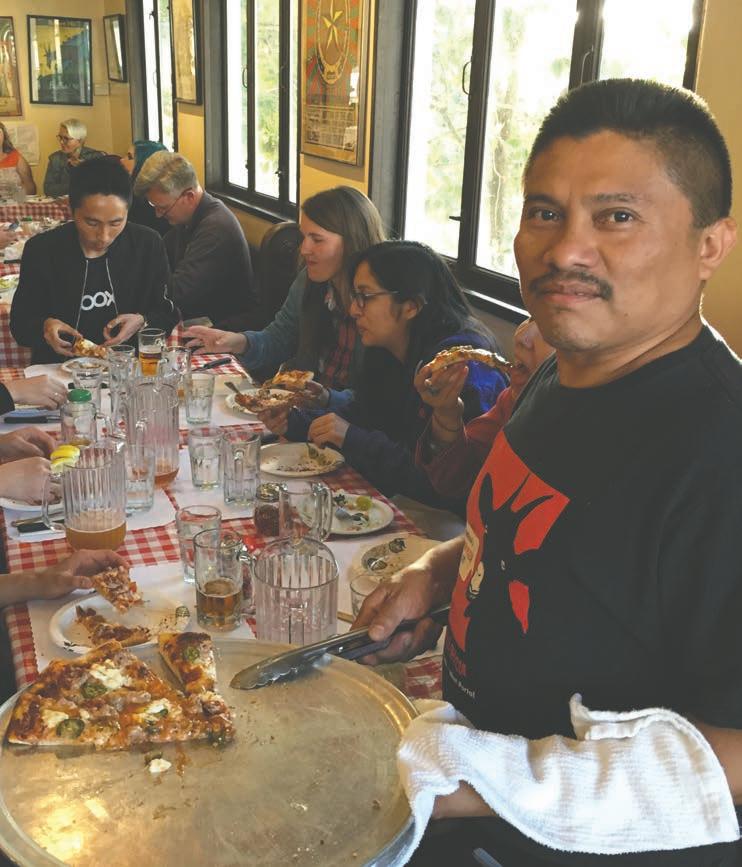

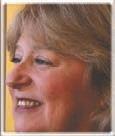

Carlos Altamirano’s Peruvian food concept has grown so quickly he has to stop and think before he’s able to list all his establishments. The owner of Mochica, on the corner of Connecticut and 18th streets, opened a new restaurant in Emeryville in April, and has another slated this summer in Lafayette. Counting Piqueos in Bernal Heights and restaurants in Walnut Creek and Montara, that brings Altamirano’s total to seven, if you include roving Sanguchon food trucks.
He likens himself as an ambassador of Peruvian food. “I love opening restaurants. It makes me feel like I am doing something good,” he said.
Mochica was the first. A chef who’d made his way up the San Francisco food chain, Alatamirano opened the restaurant in 2004 on Harrison Street. When it outgrew those digs, he relocated to Potrero Hill, taking over the space Rocketfish Sushi vacated. He expanded the windows, unblocked the ceiling skylight, and opened the kitchen to make it visible to patrons. He went with wooden paneling and matching tables because he felt that decor was friendly. “I like to keep it rustic. I don’t like things too elegant.”
Alatamirano described his cuisine as “soul food;” “comiea criolla,” like the way Creole is in New Orleans. Peruvian food, he explained, is influenced by a variety of cultures that touched that country. There are traditional bowls and anticuchos, a popular street vendor food in Peru. The spices are often akin to what one would expect
of Latin America. However, there are elements of Chinese, Japanese and African tastes, as well as touches of French and Italian.
Mochico’s Ceviche Chino dish features Ahi Tuna that comes with wantons, soy sauce and hoisin sauce. Loma Saltado is beef stir fried on a wok with fried egg. The French Fries that come with it, along with the spices, reflect European and South American elements. Occasionally a Japaneseinfluenced dish, Tiradito, will appear on the menu, featuring thinly sliced tuna snapper on a bed of Peruvian chile. The menu is different for each restaurant, but the specialty spices for all come from rocoto peppers, grown on Alatamirano’s own farm in Pescadero.
Altamirano, who hails from Lima, developed his taste buds through his mother’s cooking. “It was not quite a restaurant, but she had a small home and people would come to eat,” he said. His mother, who now lives in San Diego, often cooked for eight to ten visitors a night.
At age 20, Altimirano told his mom he wanted to move to the United States and work in a restaurant. Over the next 14 years, he toiled at several in San Francisco, starting as a cook, moving his way to head chef. He was mentored by Reed Hearon, who was a cooking celebrity in the 1990s. Hearon, who appeared on Julia Child’s Lessons with Master Chefs, opened several popular eateries, including LuLu on Folsom Street and Rose Pistola in North Beach.
“In order to move up he had to see you have a talent,” recalled Altamirano. “He pushed me to work my way up.”
My husband, Joseph, and I moved to San Francisco from the East Coast to pursue our careers and find warmer weather. When we were finally in a position to consider establishing roots here, we were thrilled to be house hunting, but also nervous about this big investment. We considered many factors in deciding where to live, the most important being our daughters’ – Mikaela, five, and Kaylee, three – education.
With all the stories we’d heard about San Francisco’s public school lottery, we thought seriously about moving to the Peninsula. We ultimately decided to take the plunge and settle on Sierra Street, a decision that in retrospect was one of the best ones we’ve made, in large part because of the wonderful community in the neighborhood and in our condominium complex. Not only that, but the City offers a lot of educational opportunities outside the classrooms. The many museums, beautiful Golden Gate Park, and Japantown are just a
All his restaurants have different names and menus. Mochica is called after Moche civilization, a forerunner of the Incas which flourished on Peru’s northeast coast in the first century, known for its skilled artisans.
“It was fascinating what they do because whatever they do, they do with love,” he said. “That kind of feeling I wanted to put into the restaurant.”
few of the places to which my daughters love going. They get to see the various and unique neighborhoods, and learn about the history, people, and culture of this City.
Some of the most important educational opportunities are when my girls ask about the tents as we walk down 16th street toward the Mission, or when they question why we volunteer at the San Francisco-Marin Food Bank on Pennsylvania Street. They’re being exposed to all the fun and educational things that San Francisco has to offer, but they’re also becoming acutely aware that there are others whose experience of the City is quite different from ours.
Living in the San Francisco is great. There are different things to do. We love that we can walk to restaurants and grocery stores, but the most important part of being in the City is that it provides us with a daily reminder that we’re privileged; there are many who aren’t. As a family, we’re learning about what it truly means to be kind and generous, and to use our privilege to help those who are struggling.
Jin Xu works as a clinical scientist at Genentech . “Why I Choose to Raise My Family in San Francisco” is the brainchild of the Potrero Residents Education Fund, a nonprofit committed to helping create a stronger, more vibrant San Francisco by ensuring that families from a diversity of income levels raise their children in the City. Submit your story to editor@ potreroview.net

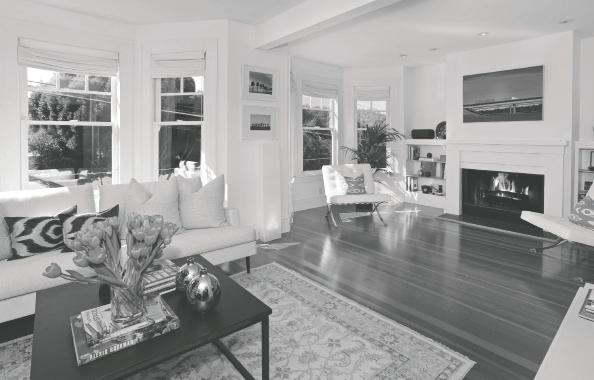
Getting a home ready for sale doesn’t have to be difficult or expensive. There are several simple ways you can add value inexpensively:
MAKE IT SHINE—There is nothing more important than ensuring your home is clean.
LIGHTEN AND BRIGHTEN—If it is time to repaint, consider lighter colors that will make your home brighter and feel more spacious.
OUT WITH THE OLD—It is easy to accumulate clutter even after just a few years. Donating or discarding unneeded items can make a home feel more spacious—and make your future move easier.
DON’T FORGET SMALL THINGS WITH BIG IMPACTS—Simple steps like painting the garage floor or planting bright flowers near your home’s entrance are easy and inexpensive ways to make a home more welcoming and tidy.
If you’d like a free report on the value of your home, call Tim Johnson at 415-710-9000.

Tim Johnson
415.710.9000
tim@timjohnsonSF.com
www.timjohnsonSF.com
#01476421
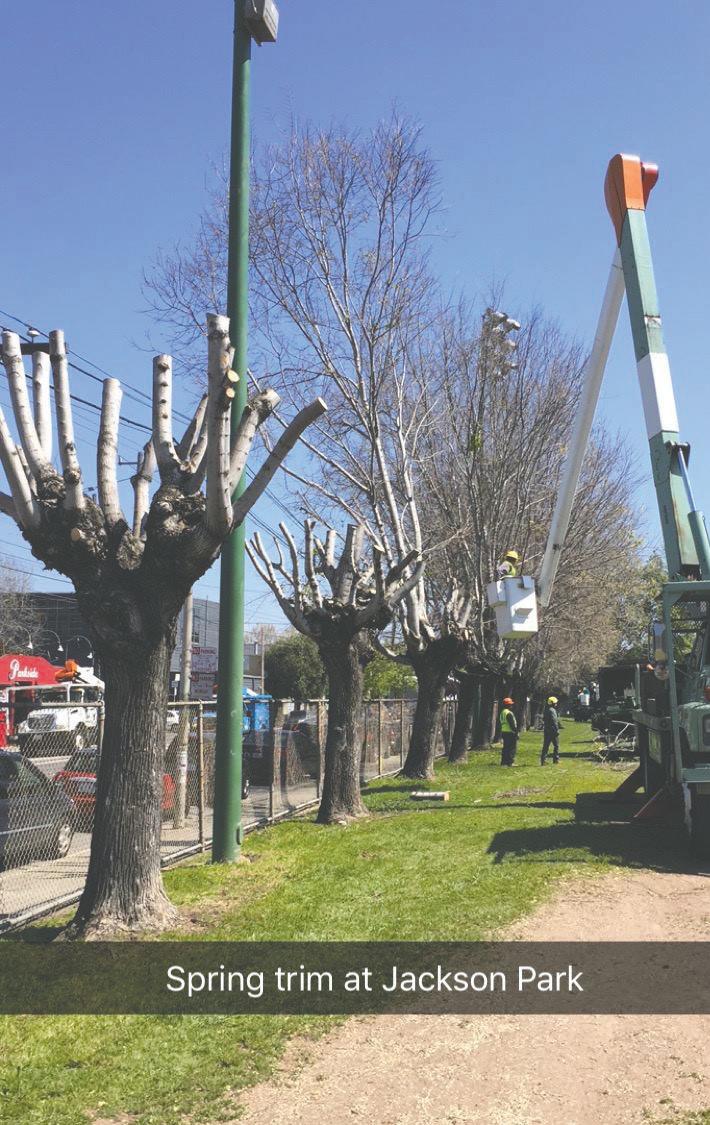
Jackson Playground, a 4.41-acre public park managed by the San Francisco Recreation and Park Department that features sports fields, basketball and tennis courts, first opened in 1912. Bounded by Carolina, 17th, Arkansas and Mariposa streets, the space is located across from Live Oak School. Several recently or soon to be completed residential buildings – including 172-unit Potrero Flats at 1301 16th Street, a 299-unit project underway at 1601 Mariposa Street, and 127 units at 88 Arkansas Street – are steadily increasing pressure on a resource that’s historically drawn visitors from throughout San Francisco.
“Jackson Park is one of the principle baseball and softball facilities in the City, and is predominantly used by people outside of Potrero Hill,” offered J.R. Eppler, Potrero Boosters president. “This was acknowledged by the Eastern Neighborhoods Plan, so it’s about reconfiguring it to provide a better balance that will serve local residents.”
Eppler explained that the considerable amount of residential development slated for Potrero Hill was envisioned by the Eastern Neighborhoods Plan, adopted by the City in 2008 with implicit requirements that enhanced open and recreational spaces would be provided. Jackson Park was identified as a resource that’d be expanded and improved.
In May, research presented at a Citizens Advisory Committee of the Eastern Neighborhoods Plan meeting indicated that Jackson Playground had more than 2,250 users weekly, including 325 Live Oak students and school staff daily.
“Jackson Playground is one of our most popular ball fields for baseball, softball, and kickball,” commented Joey Kahn, media relations and policy manager, RPD. “Since many SFUSD schools do not have their own baseball fields, they often use ours for these activities. Adult softball and kickball games are often held in the evenings as well. Live Oak School uses the park
JACKSON continues on page 14

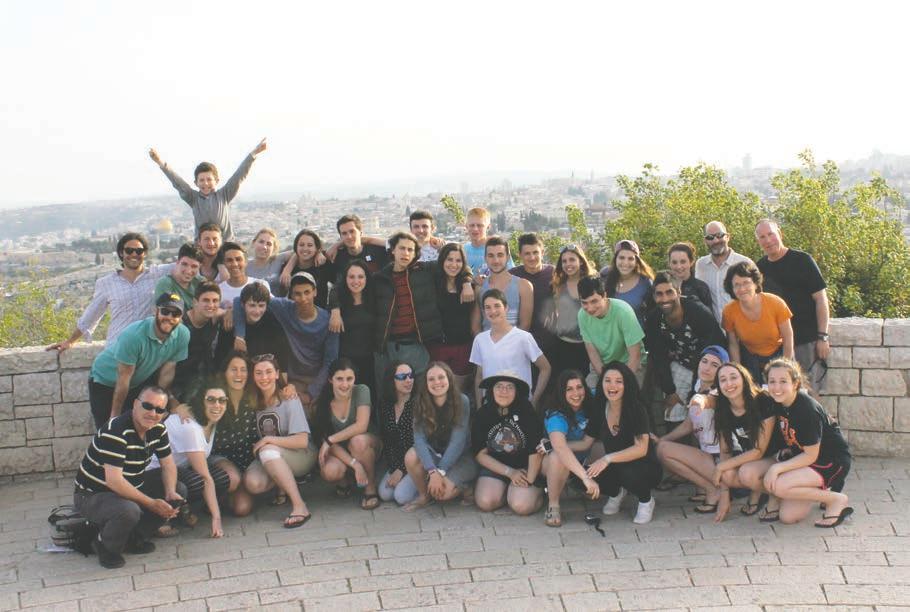








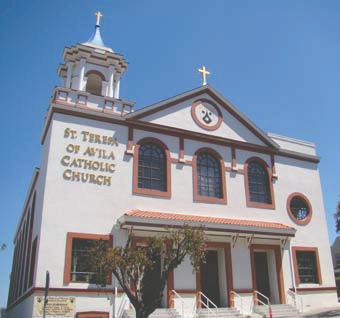





















From “The Black Woman is God: Divine Revolution,” Zakya Harris, digital film still from Abracadabrakafrika
PHOTO: Courtesy of Nye’ Lyn Tho
Now through 9/7
Art: Volupté
Bringing together sculpture, painting and drawing, Volupté highlights a series of works by San Franciscobased artists Vanesa Gingold and Mary Button Durrell that explore the natural genesis of material and form through light, translucency, surface texture, and structure. Thursdays 5 to 7 p.m. and by appointment. Space 151, 151 Potrero Avenue, Second Floor. For more information: 415.641.7230 or http://www.space151.com
7/1 through 7/2
Street Faire: Fillmore Jazz Festival
Blending art and soul, the Fillmore Jazz Festival is the West Coast’s largest free Jazz festival, drawing more than 100,000 visitors over the Independence Day weekend. Live music from multiple stages; 12-plus
blocks of fine art; gourmet food and beverages. 10 a.m. to 6 p.m. Free. Fillmore Street, between Jackson and Eddy streets.
Independence Day: Watch Fireworks from World War II Liberty Ship
Celebrate Independence Day and enjoy the Bay Area’s finest fireworks showcase aboard the docked historic World War II Liberty ship SS Jeremiah O’Brien, at Pier 45 in the heart of Fisherman’s Wharf. 6:30 to 10:30 p.m. $10. to $80. For tickets and more information: http://bit.ly/2sG3QSZ
Independence Day: Safe and Sane Fireworks
An annual tradition and community favorite. 8:30ish p.m. Farleys, 1315 18th Street.
Music: Bum Wagler & The Tune
Wranglers
Live music by Bum Wagler & The Tune Wranglers, who play original tunes in the Honky Tonk country vein. 7:30 to 9 p.m. Farleys, 1315 18th Street.
7/8 through 7/30
Theater: Vignettes on Love
Based on original writings by David Steele, with the play co-written by Steele, Victoria Chong Der and Davern Wright, Vignettes On Love strips raw the sexuality and ideology of six San Franciscans by exploring their intersecting lives as they struggle with love, betrayal, and self-destructive tendencies in this fast-paced dark comedic drama. Directed by Jim Kleinmann. Mature audiences only. Contains nudity and sexual content. Thursdays through Saturdays 8 p.m. Sundays 7 p.m. Tickets $25 - $55. Potrero Stage 1695 18th Street. For more information and to purchase tickets online: http://playground-sf. org/vignettes
Art: Kid’s Storytime Art
What could be better than reading a story together, and then making art inspired by it? Sponsored by the Dogpatch Center for Arts & Culture. Ages three and up. 12:15 to 1:15 p.m. $15. Arch, 10 Carolina Street. For more information and to register: dcenter.org/storytime.
Food: Fermented Pickle
Workshop
Learn to make fermented dill pickles with University of California master food preservers. Sponsored by Dogpatch Center for Arts & Culture. 7 to 8 p.m. $20. Before and after open to the public, with pickling supplies for sale. Spark Social SF, 601 Mission Bay Boulevard North. For more information and to register: dcenter. org/food.
7/11, 7/18, 7/25
Art: Tuesday Night Drawing Series
Learn to sketch from a live model (clothed). Adults only. Sponsored by Dogpatch Center for Arts & Culture. 6 to 8 p.m. $15 to $99. Arch, 10 Carolina Street. For more information and to register: dcenter.org/arch.
7/11, 7/18, 7/25, 8/1
Dance: Lindy Hop Swing Dance Classes and Live Music Dance Party
Learn the Lindy Hop, the original swing dance craze from 1930’s Harlem and possibly the most fun partner dance ever! Brought to you by Lindy in the Park instructors Hep Jen and Ken Watanabe. Large dance floor and full bar. No partner or experience required. Grand Opening of the Woodchopper’s Ball, July 11, 2017. Live music swing dance party, 9 to 11:30 p.m.; beginning, 8 to 9 p.m., and intermediate, 7 to 8 p.m., classes every Tuesday. Full fourweek class series: $75 per person; $60 in advance. Dance party only, $10, free for students. Verdi Club, 2424 Mariposa Street. For more information and to register: http:// www.woodchoppersball.com.
Music: Daniel Berkman Potrero Hill resident Daniel Berkman is a composer, multi-instrumentalist, and innovator of the kora, a 21-stringed harp/lute from West Africa. 7:30 to 9 p.m. Farleys, 1315 18th Street.
Art: Official Guinness World Record Attempt
Asian Art Museum attempts to earn the Guinness World Records title for Largest Human Flower with “Lotus Live.” Up to 3,000 community members will join together to form
the shape of a lotus flower. Open to the public. Free. 1 to 3 p.m. Asian Art Museum, 200 Larkin Street. To register: http://bit.ly/2sF9W67
Community: AIDS Memorial Grove Volunteer Cleanup Day
Dedicated to the creation and longterm maintenance of the first living memorial to those lost to AIDS, and in support of those living with HIV. Wear comfortable clothes. Work gloves and lunch provided. 9 a.m. to 1 p.m. Free. National AIDS Memorial Grove, Nancy Pelosi Drive & Bowling Green Drive, Golden Gate Park. For more information: http://bit.ly/2rZWR5p.
Block Party: “Sunday Streets” / Mission
Sunday Streets, San Francisco’s official block party, is a monthly roving neighborhood celebration and fivehour party where the streets are closed to vehicles. Pedestrians, roller skaters, bicyclists, yogis, and everyone except for cars take over the roads for an afternoon. Activities include treasure hunts, dance performances, hula hooping, dodgeball games, yoga classes, bubble parties, and tons more fun stuff. 11 a.m. to 4 p.m. Free. Valencia Street. For more information: http://bit.ly/2tyqixf.
Community: Dogpatch & Northwest Potrero Hill Green Benefit District
General Working to green-up, cleanup and beautify public spaces in Dogpatch and NW Potrero Hill. Board Meeting. Free. 6:30 to 8 p.m. Tivoli Room, University of California, San Francisco, 654 Minnesota Street. http://www.dnwph-gbd.org.
7/20 through 8/26
Art: The Black Woman is God: Divine Revolution
A group visual art exhibition celebrating the black female presence as the highest spiritual form. More than 60 intergenerational artists working in sculpture, painting, new media, and photography create new myths to challenge Eurocentric notions of God. Opening reception on July 20, 6 p.m. to midnight. Free. SOMArts Cultural Center, 934 Brannan Street. For gallery hours and more information: http://bit.ly/2tSyqrV.
7/22 and 7/23
Gardening: 2017 Orchids in the Park View orchids on display from local growers, and purchase plants and supplies from vendors from all over the world. 10 a.m. to 5 p.m. General admission $5. San Francisco County Fair Building, Hall of Flowers, 1199 9th Avenue. For more information and to purchase tickets: http://bit.ly/2sVxIgk.
Music: Soul Delights Live music by Soul Delights. 7:30 to 9 p.m. Farleys, 1315 18th Street.
Music: The Goat Hill Geezers
Covers of Beatles, Eagles, Everly Bros, Simon & Garfunkel, Joni Mitchell, and Crosby, Stills, Nash, and Young. A tribute to the Summer of Love, with many 1967 hits. 7:30 to 9 p.m. Farleys, 1315 18th Street.
Art: Relief Block Printing
Learn the art of relief printmaking with Megan Adie, creating a lovely finished print. Sponsored by the Dogpatch Center for Arts & Culture. 1 to 4 p.m. $65. Arch, 10 Carolina Street. For more information and to register: dcenter. org/print.
7/28 through 7/30
Theater: San Francisco Ghost Plays
An original, dramatic series featuring six short plays inspired by local events and legends written. Directed by Karen Byrnes, who grew up on Potrero Hill. July 28 at 8 p.m., followed by opening night reception. July 29 and 30 at 2 p.m., with guest speakers. Mature content, must be 16+. All tickets general admission and sold the day of the event only, one hour prior to curtain at the Magic Theater. $30, cash only. Magic Theater, Building D, Fort Mason. For more information: http://www.sfghostplays.com or contact Karen Byrnes sfghostplays@ gmail.com (please do not contact Magic Theater).
Film: Now is the Time: Healthcare for Everybody A documentary film by Terry Sterrenberg and Laurie Simons Now is the Time: Healthcare for Everybody is about the state of our health care system and advocacy for a single-payer healthcare. 1 to 4 p.m. Free. San Francisco Main Library, Koret Auditorium, 100 Larkin Street. For more information: http:// bit.ly/2sFCWus or call Janet Tom 415.557.4460.
For six months, the Museum of Craft and Design will be transformed into “an immersive architectural environment” as part of Architectural Pavilions The exhibition will be among the Museum’s longest, focusing on the importance of design, in an attempt to appeal to the Bay Area’s robust architectural community.
London-based guest curator Mariah Nielson, who grew up in California, was inspired by the European tradition of pavilions. From 2009 to 2011, she was a MCD curator; her background as an architect and design historian informed her work. “An architectural pavilion is traditionally defined as a free-standing structure; an object of pleasure. Pavilions are typically constructed for temporary events or display, with their unorthodox forms contributing to their spectacular appearance.”
According to MCD assistant curator Ariel Zaccheo, pavilions can be easily put together and taken apart. She likened them to follies, ornamental buildings with little or no practical purpose.
Architectural Pavilions features two site-specific installations by local architects. Sunset-based artist and craftsman, Jay Nelson, is best

Potrero Dogpatch Merchant’s Association meets the second Tuesday of each month at 10 a.m. at Goat Hill Pizza, corner of Connecticut and 18th streets. Website: www.potrerodogpatch.com . Call 415.341.8949. Next meeting: July 11th.
Starr King Open Space meets for monthly Stewardship Day the second Saturday of each month from 9:30 a.m. to 12:30 p.m. at Starr King Open Space, corner of Carolina St. and 23rd St. Come out and meet your neighbors, be a community steward, enjoy the natural grassland habitat, see spectacular views, and celebrate our beautiful neighborhood open space. Everyone is welcome. Find out more at www.starrkingopenspace. org or facebook.com/StarrKingOpenSpace
SOMA Rotary Club meets the second and fourth Thursday of the month at Mission Rock Resort, 817 Terry Francois Blvd. We meet at 6 p.m. for a mixer and 7 p.m. for a dinner meeting. We provide community service to the Mission Bay, Potrero, and Bayview communities. The focus is on providing services for the under-served of our community. The website is located at: www.meetup.com/Mission-Bay-Rotary-Club. For more information contact Nine at: n.ladow@comcast.net
Potrero Hill Garden Club usually meets the last Sunday of the month at 11 a.m. for a potluck in a local home or garden. We occasionally visit gardens such as Ruth Bancroft, Yerba Buena, Cornerstone, Filoli, and the rooftop garden at the Fairmont. We discuss gardening appropriate for Potrero Hill’s microclimates, and often have speakers on subjects such as drought, wind, shade, pests, and even flower arranging. For details, please contact us at Gardener@PotreroHillGardenClub.org
Dogpatch & Northwest Potrero Hill Green Benefit District General Board Meeting July 19. Working together to green-up, clean-up and beautify public spaces in Dogpatch and NW Potrero Hill. Free. 6:30 to 8 p.m. Tivoli Room @ UCSF, 654 Minnesota Street. http://www.greenbenefit.org
known for his imaginative work with reclaimed wood. “I’m interested in architectural forms because of the weight they carry in our lives. On the most basic level they provide us with a safe place to rest and think, but they also determine the way we interact with each other and create a frame for the outside world. Arranging the pieces of a structure is infinite and those arrangements make us who we are.”
Dogpatch-based IwamotoScott, led by Lisa Iwamoto and Craig Scott, is located at 18th and Tennessee streets, just a stone’s throw from the MCD. The firm pursues architecture as a form of applied design research. Their MCD installation was created with the assistance of Iwamoto’s University of California, Berkeley architecture students.
Six previously constructed pavilions are represented by material samples, drawings, prints, films, smallscale models and digital photographs
London-based architectural stu-
dio, Carmody Groarke, established in 2006 by Kevin Carmody and Andrew Groarke, exhibits their 2014 projects White Cube at Glyndebourne, Maggie’s Centre Clatterbridge, and Studio East Dining. Bloom , from Do/Su Studio Architecture, features models used for testing various materials and treatments. This project, in collaboration with Los Angeles-based Materials & Applications, was designed to find materials that react to heat, as created by direct sunlight and exposure to ambient temperatures. When the material’s surface is cool, it appears solid; when heated up, the panels open and “bloom,” representing kinetic properties without the need of a power source. The process of extensive experimentation is evidenced by the different models exhibited.
Warren Techentin Architecture’s La Cage Aux Folles, another collaboration with M&A, explores geometry
MCD continues on page 21

Mau Law Firm • McRoskey Mattress Co. • Jerry Meyer
Richard Millet • Jesse Miner, Vegan Personal Chef • Mission Rock Resort • Mochica • Moshi Moshi
Mr. and Mrs. Miscellaneous • Museum of Craft and Design • NOON all day • Oberon Design &
Manufacturing • Paragon Real Estate | Calista Shepard • Pat’s Garage • Paul Terry and Associates
Pawtrero Hill Bath House & Feed Co. Ltd. • Pet Camp • Philz Coffee, Inc • Photography by Emily Payne • Piccino • Pier 70 Partners • PlayGround • Plow • Podesta Construction Inc. • Post & Parcel
Potrero 1010 Apartments
We love calling Potrero Hill our home. Over the past decade-plus, we’ve helped dozens of clients find their perfect spot on the Hill. It’s easy to sell the virtues of our beloved neighborhood, having lived and worked here ourselves for more than 20 years.
THE PROOF IS IN THE SALES...
Wendy Watkins
Wes Freas
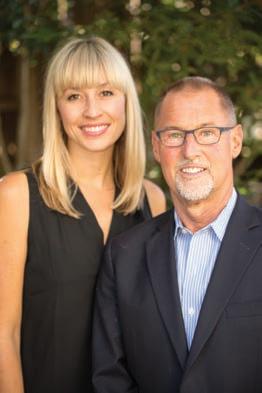
JACKSON from page 11
during the day for recreation. Thousands of people use the park per week. In addition to after-school programming, we use the site for Pacific Arts and Junior Giants summer camps. San Francisco Youth Baseball League also uses Jackson Playground.”
In addition to the athletic fields, the park features two play structures for children, with a sand area, community garden, grassy open space and clubhouse equipped with restrooms.
“Much of the northern part of the neighborhood has been up-zoned for residential, so it’s the general increase in development, more than specific projects, that are expected to increase usage of the park,” said Eppler.
“This winter, the Department pruned some trees around Jackson Playground to address ongoing issues with low power lines owned by PG&E,” Kahn stated. “$1.6 million from Eastern Neighborhood Impact Fees has been allocated for planning and some improvements to Jackson Playground. As always, the Department works closely with the community on the planning and design of the Park. In the case of Jackson Playground, the Department is working with the Friends of Jackson Playground to develop a vision for a possible renovation.”
Last year, Friends of Jackson Park – a nonprofit that operates under the aegis of the San Francisco Parks Alliance – held a series of community meetings to discuss park renovation designs. About 70 neighbors attended an April 2016 gathering to vote on a preferred scheme based on three
options: optimization of recreational space, with a new community center and full-sized basketball court; prioritization of open space, with an expansion into Carolina Street, new community center, and full-sized basketball court; and a hybrid of the two, including the Carolina Street growth, with a new community center and indoor full-sized basketball court and meeting rooms.
Eighty percent of the voters favored expansion into Carolina Street, with almost half supporting the third option, one-third the second, and just 15 percent the first. A prevailing sentiment was to preserve street parking around the park; Arkansas Street will remain intact if the project proceeds. The renovation could increase the park’s open space area by 900 percent, playground by 175 percent, community gardens by 280 percent, as well as add a dog run and public plazas.
The design emphasizes green space and amenities, such as community gardens, over sports facilities, in an effort to balance the needs of nearby neighbors with other City residents.
“Friends of Jackson Park’s proposal does a good job of achieving that balance,” said Eppler.
Santa Clara-based Verde Design, San Francisco Parks Alliance, RPD, and Friends of Jackson Park have been involved in the renovation visioning process. A project feasibility study is being conducted to investigate whether there’s any hazardous material on the site, estimate renovation costs, and develop a concept plan to be submitted
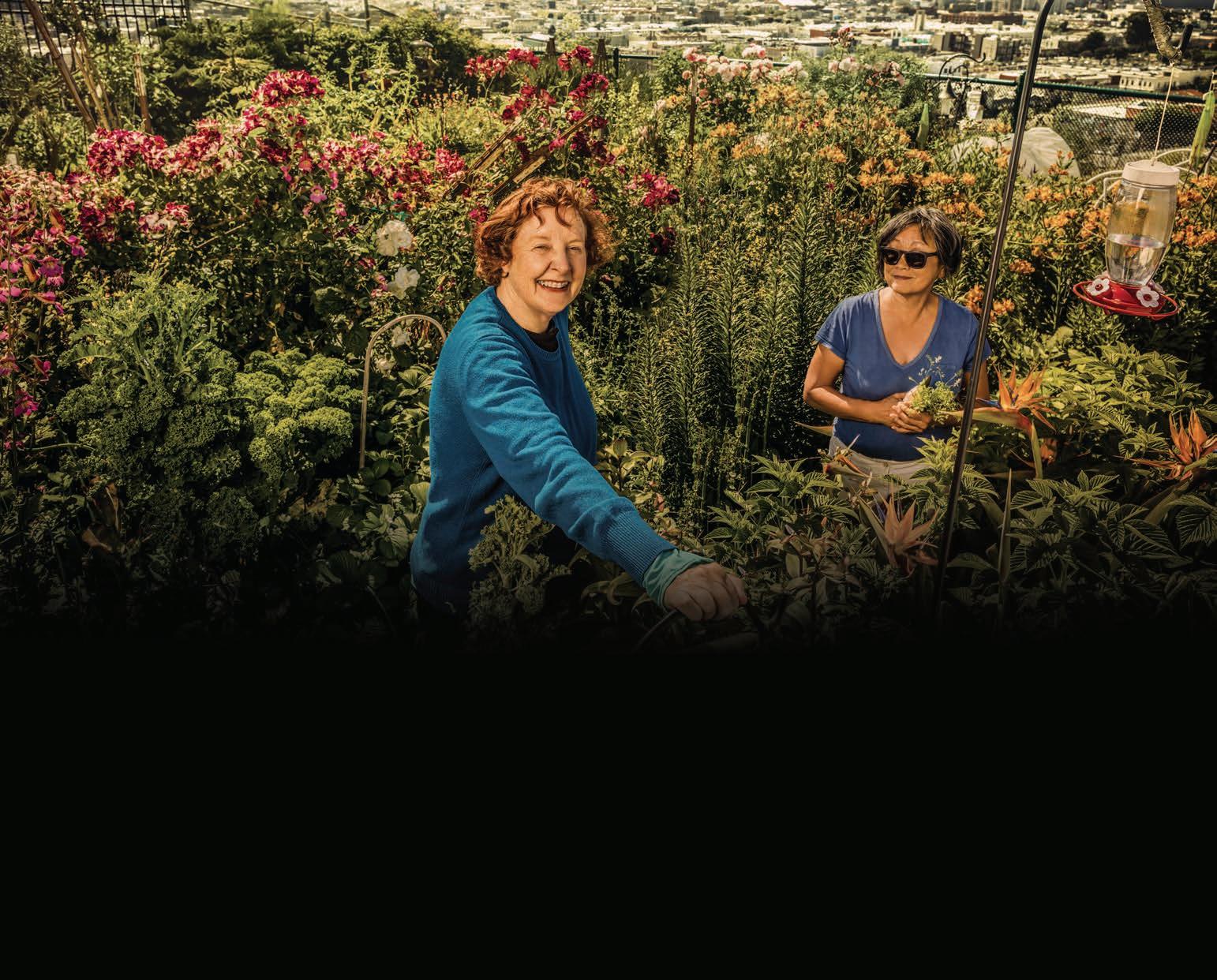
Last spring, the seven San Francisco Unified School Board members unanimously approved a resolution to direct newly appointed San Francisco Unified School District superintendent Vincent Matthew to begin planning a school in Mission Bay. The institution – kindergarten through fifth, sixth, or eighth grades – is expected to be completed by 2023. A 2.2-acre lot on Parcel 14, provided by the University of California, San Francisco, has been reserved for the campus, close to the Mission Bay Circle, a roundabout, bordered by Owens Street, Sixth Street, and Nelson Rising Lane, home to UCSF’s Neurosciences Clinical Research Institute.
According to Matt Haney, Board president, who coauthored the resolution, a number of details about the school have yet to be decided, including the grades it’ll cover and whether or not it’ll have a special focus. “This will be determined through a community process, a needs assessment, and consultation with partners,” he said. “It is also possible that the site may include a district preschool. Ultimately, the decision will be made by the Board.”
The district anticipates high demand for the school. Roughly 70,000 new housing units are being built throughout San Francisco, a significant percentage of these in or around Mission Bay. A number of the residential complexes contain affordable housing units, accessible for purchase or rent to families with children. As a result, SFUSD enrollment is expected to increase by upwards of 14,000 students by 2025, stretching existing campus capacity.
Funding for the campus is secured by part of a $100 million set-aside for school construction in Bayview and Mission Bay. The money comes from a $744 million facilities bond City voters approved in 2016. Bond funds can also be used to build below market rate housing for teachers.
A 90-foot height limit for the school site could make it possible to, in addition to the campus, develop affordable housing for teachers, space for public meetings and community
college classes, or a Science, Technology, Engineering and Math laboratory to educate students and train teachers.
“We put clear timeline benchmarks into the resolution,” Haney said. “It will take four to five years to actually build the school. The sooner we get moving, the better. Currently the site is sitting there growing weeds, completely underutilized. It is our responsibility to use to it to the best and fullest potential. This is going to be a huge win for the community and our entire City.”
According to Sarah Davis, spokesperson for Mission Bay Families, a group of 80 neighborhood households who support the school, advocacy for Mission Bay Children’s Park, a 2.4-acre green space at Long Bridge and China Basin streets near Mission Creek, served as a catalyst to develop support for the campus. “This was really an effort of a lot of people and groups,” said Davis. “The South Beach Democratic Club helped do the strategizing. Mission Bay Families did the outreach to families. Parents from SoMa, Potrero Hill and Dogpatch got the word out using email lists and tabling at events. Mission Bay CAC and UCSF gave us institutional support. We all had our own groups. We came together to create the MBSSC.”
Bruce Agid, Mission Bay School Steering Committee lead and past president of the South Beach District 6 Democratic Club, said parents – trading off to care for their children – and residents regularly attended SFUSD Board meetings to voice their support for the school. On the night the resolution passed, about 40 advocates organized by MBSSC were at the gathering.
“This wouldn’t have happened if it weren’t for the strong support of the community,” said Haney. “There has been huge support and excitement for a school in Mission Bay among residents, businesses, institutions, and families. They came out to all the public meetings, joined with us to draft the resolution, and have been champions and close partners. They have made the difference in sparking a renewed conversation to finally get this done.”
Mission Bay is beset with construction activity, little landscaping and closed streets, a challenging environ-

ment for young children. “This would all be part of the conversation as we design the school,” said Haney.
“The challenge and opportunity for Mission Bay is to ensure those remaining connections have aspects that are at a human scale,” said J.R. Eppler, Potrero Boosters president.
Richard Garcia, parent of a toddler and Mission Bay School Steering Committee member, said that he expects upcoming projects to add to the community’s growing resources and character. “There’s a lot more greenspace going to be built out in the neighborhood, including with Lot A with the Giants and the Warriors arena,” said Garcia. “This will add to the greenspace and children’s parks already in place around Mission Bay and UCSF. These future projects and buildings will add to this unique neighborhood that is accessible to others around the City.”
“Once the area around the school is built out, it’s going to be very attractive and welcoming to kids coming to the school,” said Agid.
Although the Boosters haven’t taken a position on the school, Eppler said he’s happy to see the project move forward. “There’s certainly more need than anticipated,” he said. “I think that naturally there’ll be a science and technology influence on the school given the nature of UCSF to the south
and the residents of Mission Bay.”
“I support getting the Mission Bay school as soon as possible,” said Corinne Woods, chair of the Office of Community Infrastructure and Investment’s Mission Bay Citizens Advisory Committee. “We have hundreds of children living in the neighborhood. We want them to grow up here and for their families to be able to stay and build Mission Bay as a community.”
According to Haney, there are more than 15,000 Mission Bay residents, including many children. “There currently are no elementary, middle or high schools, public or private, in the Mission Bay area,” said Haney. “This is unacceptable. This is a community that urgently deserves and needs a school. Our demographic estimates show that the greatest growth in new SFUSD students over the next seven years will come from the SoMa/Mission Bay area. Soon, we will not have enough classrooms for the number of students in San Francisco. It is critical that we get ahead of this challenge,”
SFUSD’s rules regarding school choice dictates that an elementary school in Mission Bay will be open to children throughout the City. However, Mission Bay parents are hopeful that they’ll shift from having to transport their children to Potrero Hill and Mis-
NEW SCHOOL continues on page 21


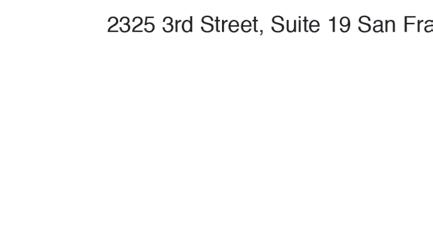


and allowed her offspring to balance school demands and extracurricular activities while navigating application hurdles without parental aid. However, she commented that increased use of such services exacerbates the divide between families with resources and those who can’t afford the steep fees.
Stone emphasized the importance of families thoroughly researching potential counseling services, referencing the IECA as the only group within an unregulated industry that vets its membership. She also touted the association’s efforts to address economic inequalities among those college bound.
“The IECA membership is committed to taking on as many pro-bono clients as they can,” said Stone. “They also offer free workshops in the community, and work with community groups, as well as take on individual pro bono clients. We’ve partnered with nonprofits and worked with the San Mateo Boys & Girls Club, for example.”
College counseling isn’t a licensed field. Over the last five years Stone has witnessed an explosion in the number of people who advertise these services, regardless of their training or expertise. The IECA, which has been around for decades, requires its members to have a graduate degree, three years of educational placement experience, student advising knowledge, involvement in campus visits and professional references. Stone has a doctorate in special education from the University of California, Berkeley. She works with students of all academic backgrounds and abilities, including those with special learning needs and who want to pursue performing arts.
Rate structures vary among companies, from hourly to package deals or a combination of the two. Campanile offers a lower cost option for those applying to UC schools only, and a comprehensive package for up to 10 colleges for $6,800. Stone is also the ex-
ecutive director of a separate company, Campanile College Tours, which plans door-to-door college tours, including scheduling detailed itineraries to make the most of time spent on campus.
Noe Valley resident Tanya Shadoan’s daughter, Zoe, is a senior at the School of the Arts in Diamond Heights. Shadoan discovered by accident that her employer, Citibank, offers free access to College Coach, a phone- and emailed-based counseling service offered by Bright Horizons. Each time a student or parent calls the company they speak with a different counselor, which Shadoan thinks is beneficial in terms of getting a variety of different perspectives. Shadoan and her husband knew that they’d seek college counseling assistance, as their own application experiences were decades ago and the process has gotten more competitive.
“What I’m surprised by is the number of private school parents who still pay for college counseling,” commented Shadoan. “I think it’s driven by fear or anxiety. Many of them are anxious or stressed. Parents have incredible anxiety, maybe more than there needs to be. College is like the culmination of 18 years of parenting angst. People who have the money will spend it on college counseling.”
Shadoan believes that a counselor can help determine which colleges will offer the most merit-based aid, a vital consideration for many Bay Area families and residents of other high cost areas. Although schools will generally factor cost of living expenses in determining a family’s need for aid, Shadoan doesn’t think they adequately consider the region’s expensive mortgages and rents.
“I find that in my practice working with a college counselor can save people money if they don’t apply to the wrong schools or too many schools,” explained Stone. “Also, really strong essays can lead to more money awarded to students from schools; good applications can lead to more money. It helps to choose the right school and stay there for four years. Working with a trained


professional can reduce stress on the family.”
Independent high schools tend to have smaller student to faculty ratios, with better access to college counselors than those at public schools. Whether or not a student attends a public or private high school, families have situations that may warrant use of a commercial counselor. Virginia Donohue, executive director of Animal Care and Control and a Noe Valley resident, is mom to triplets Sydney, Liam and Johanna, all high school seniors, two at Lowell High School, the other at Mercy. The three have differing academic interests; two want to attend schools in different regions of the country, while the third is open to any destination. They’re paying Scholar Company about $150 an hour to help with standardized tests, tutoring and application essays.
“We polled our friends and got a bunch of recommendations for services,” said Donohue. “We hired Scholar Co., and so far it has been a positive experience. It can be a pretty anxiety provoking process. I applied 40 years ago and things are completely different. Now it’s so much easier to hit a button and apply to more schools; it seems more complicated and competitive than ever.”
PARKING FEES from front page
early-70s. A diabetic who exercises at the gym to manage her blood sugar levels, she’s upset by the policy change, which’ll “dramatically” increase her expenses.
rates,” explained Shinnerl. “We’re an ultra-urban campus, and parking is very limited. There has been a lot of growth in the area, and we need to all practice better methods to get to campus. Seventy percent of UCSF employees do not drive alone to work. They walk, bike, shuttle, carpool and vanpool. We’re asking the larger community, not just employees, to consider other modes. These other options are greener and help reduce traffic congestion.”
According to Shinnerl, a comprehensive analysis conducted on UCSF’s parking inventory indicated that demand has exceeded supply. Another study, comparing the Bakar Fitness & Recreation pricing to other facilities, found that the University’s gym memberships are competitively priced.
“The last thing we want to do is build lots of parking and encourage everyone to drive,” Shinnerl added. “So, we know we have to manage the capacity. That’s why we’re able to provide a senior discount to off-peak members. We want everyone to think about this precious resource. This is really about a cultural shift.”
Gym members can use UCSF’s shuttle system for free. The Green shuttle stops at 499 Illinois Street, 654 Minnesota Street, Fourth Street near Campus Way adjacent to the Owens Street Garage, and 185 Berry Street. It runs weekdays from 6 a.m. to 7:15 p.m., between two and four times an hour. The shuttle’s Gold line connects with Zuckerberg San Francisco General Hospital; the Red and Yellow lines stop at the 16th Street Bay Area Rapid Transit station.


A Change.org petition was created by Indiana Street resident, William Jones, to urge UC Regents chairperson Monica Lozano, UC president Janet Napolitano, UCSF Chancellor Sam Hawgood and other University officials to “grandfather” existing Premier members with the original parking agreement, offering three free hours. The appeal states that University marketing encouraged prospective gym members to sign-up for Premier status, touting such benefits as complementary parking, and that imposition of fees will cause financial hardship to elderly persons and those on fixed-incomes. The petition drew more than 530 signatories. Some signers questioned the basis for assertions of increased parking demand, claiming that the parking area hasn’t been overcrowded. Jones calculated that the additional charges could add between $600 and $2,000 in added annual costs for members.
“Many of us joined Bakar Fitness and Recreation Center as Premier members before the gym was opened,” Jones commented. “Being a Premier member costs us extra in monthly dues for added benefits. One of the promised benefits is for three hours free validated parking included in our package. In the past, Bakar has reduced or eliminated many added benefits and for the most part, we have to simply look the other way.”
According to Clare Shinnerl, UCSF associate vice chancellor for campus life services, seniors are offered discounted membership, and the reduced parking rate offered in the new structure is quite competitive. “We have to have parity in our parking
“Everyone who drives to UCSF— patients and their families, our medical staff, research scientists, staff and students and visitors, as well as the Premier Fitness center members at our Parnassus campus—must pay for their own parking,” Shinnerl emphasized. “The only reason that UCSF subsidized the cost of parking for Premier Fitness center members at Mission Bay was because when the facility opened 15 years ago there was excess parking and the gym was underutilized. With the opening of the new hospitals at Mission Bay and additional construction planned, the parking lots are now near capacity. It no longer makes sense to offer free parking to Premier Fitness center members, when the lots are full and everyone else must pay. Subsidizing parking for these members also takes away from investing in programs, services, and equipment for the fitness center.”
SFSU from front page
who espouse Zionism have a place at the University, and a lack of disciplinary actions towards protestors who disrupted a campus visit by the Mayor of Jerusalem, Nir Barkat. In addition, a Jewish student group was allegedly excluded from a campus civil rights fair.
Last month, students filed a lawsuit against SFSU, alleging that campus officials have fostered anti-Semitism for almost 25 years, including the recent disruption of Barkat’s speech and the
SFSU continues on page 17
SFSU from page 16
civil rights fair incident. The suit, filed with the U.S. District Court in San Francisco, also cited a 1994 event in which Star of David images interwoven with dollar signs were displayed at the student union.
Although Wong wrote a May opinion piece for The Jewish News, in which he expressed his desire that Jewish students feel safe and welcome at the University, some believe the message and the medium were insufficient.
“I’ve been a leader in the movement to change the intellectual climate for Jews and all students on campus,” said Marc Dollinger, SFSU professor of Jewish Studies. “None of these incidents have been resolved or barely addressed.”
Wong’s critics include San Francisco Hillel, which serves several public universities, including SFSU, as well as the Jewish Community Federation’s chief executive officer, Danny Grossman, and Tracy Turoff, vice president of Hillel International, who have both met with Wong to discuss their concerns. Abby Porth, executive director of San Francisco Jewish Community Relations Council, has also criticized the University administration’s lack of support for Jewish students.
“We’re part of a broad coalition of groups and we know that there are many people in the Jewish community who are highly concerned about the situation at the University,” said Jeremy Russell, director of marketing and communications, JCRC. “Because of how things have been handled by the
administration recently, concerns have been heightened. The campus climate situation isn’t simply affecting Jewish students. Dialogue and inclusivity need to be encouraged to improve the campus climate in a broader sense.”
Tensions flared last year when students from the General Union of Palestine protested a Hillel-sponsored campus appearance by Barkat. The protestors deployed megaphones to disrupt Barkat’s speech; no disciplinary action was taken by the University. According to Dollinger, last winter Wong initiated a follow-up invitation to Barkat, but waited until days before the scheduled event to publicize it, causing Hillel members to scramble to prepare for Barkat’s arrival. Barkat subsequently cancelled the trip.
“He invited him back and barely told anyone,” said Dollinger. “He arranged for him to speak in the farthest reaches of campus. When the Mayor learned of the arrangement, he canceled. The idea was that it was a political stunt to make up for last year; maximum gain with minimum pain. I didn’t even know that he had been invited.”
Last winter, SF Hillel was allegedly excluded from participating in a campus civil rights event, “Know Your Rights.” According to a The Jewish News article, SF Hillel staff member, Jason Steckler, accepted an invitation to attend the event proffered by one of its organizers. He later received a phone call from a planner asking about Hillel’s position on anti-Islamic posters found on campus, which Steckler condemned. Days later Steckler received an email explaining that the event was full and Hillel couldn’t participate.
According to Dollinger, neither Wong nor the administration publicly addressed the incident, despite demands from students for a statement condemning it. “There’s been radio silence about it,” he said.
“In years past, you could argue that these issues were connected to the Israeli-Palestinian conflict,” said Ollie Benn, executive director, SF Hillel. “But when a coalition of faculty, academic departments and students actively decides to exclude the Jewish student group from campus events, and when senior administration appears to favor some student groups over Jewish students, the analysis changes.»
Dollinger explained that when anti-Islamic posters were hung on campus last fall and spring, Wong spoke out against the incidences publicly. In contrast, in May an anti-Semitic group, the Traditionalist Worker Party, posted placards promoting their organization on campus, without a public response from the President. Instead SFSU Deputy Chief of Police sent an internal email to a Hillel member about safety precautions.
The Southern Poverty Law Center describes the Traditionalist Worker Party as, “A white nationalist group that advocates for racially pure nations and communities, and blames Jews for many of the world’s problems.” In response to the incident, The AntiDefamation League advised SFSU students to stay away from anyone posting the placards and notify the police of the activity, as members of the group have been known to be dangerous.
In May, Wong issued an open letter condemning anti-Semitism and
Islamophobia at the University, and stated that the “Know Your Rights” incident is under investigation by the Vice President. The Office of the Vice President didn’t response to an inquiry by the View about the probe’s status.
Russell expressed concern about the lack of communication regarding the “Know Your Rights” investigation, stating that no updates have been issued to JCRC or its community partner organizations. “We’re eager to have some type of communication,” he said. “When the investigative report comes out we hope for a rapid statement by the President followed by action if it is found that the Jewish group was intentionally excluded. Action needs to be taken to prevent this from happening again in the future.”
Wong’s letter was issued in the wake of anti-Palestinian posters found on campus, as well as a recently published The Jewish News article, which criticized the Administration’s response to concerns raised by the campus Jewish community.
“The letter from the President misses the point,” Dollinger commented. “Islamophobia is a terrible, horrible thing, and the entire Jewish studies faculty and SF Hillel issued statements condemning the antiIslamic posters that were put up around campus. However, by lumping antiSemitism and Islamophobia into one letter he failed to take responsibility for his role in promoting institutionalized anti-Semitism on campus.”
An anonymous source confirmed that the atmosphere on campus has
SFSU continues on page 18
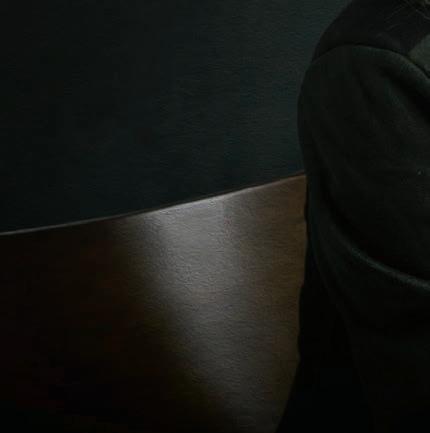




SFSU from page 17
worsened under Wong due to his incompetence in handling politically charged issues and indifference towards concerns raised by Jewish students regarding anti-Semitism.
In April, five students from SF Hillel sent a letter to Wong stating, “Participation in Jewish life at SF State has become increasingly politicized. As you know, on the quad, and in classrooms, we have to decide every day whether we need to take a stand — again — against lies, intimidation, and one-sided stereotypes. We know that prospective Jewish students have decided not to come to SF State precisely because of the campus climate.”
The students want the President to publicly acknowledge anti-Semitism, promote the ADL’s anti-bias training for faculty and adopt the University of California Board of Regents Principle Against Intolerance.
“The fundamental question is, how do we engage differences on University campuses?” Dollinger posed. “IsraelPalestine is a hot political topic and it always will be. The question is, how will the Administration engage students around issues of differences. Universities are about political engagement across lines of difference, and we should get together, debate and discuss across these lines of difference. This kind of communication has broken down under President Wong. He needs to make a statement of his vision for the University, describe how students of difference will engage with one another and make an action plan to make it happen.”
PUBLISHER’S VIEW from page 2
around the block.
When a car pulls out of a parking space, while all vehicles are responsible for their actions, the driver in the traffic lane has the right of way. The de-parker is responsible for waiting until it’s safe to hit the road.
Bicycle lanes, like the prominent ones on Valencia Street, while sometimes narrow, should be treated similarly to other lanes. For instance, if a vehicle wants to turn right when there’s a bike lane on the right side of the road, it should signal right to change lanes, look to ensure there are no bicyclists in the lane, then move into the lane anywhere on the turn block. The vehicle will block the bike lane, frustrating cyclists, perhaps, but legally doing so.
And, by the way, no tweeting in traffic!
VERMONT from page 3
examiner van, to which a body was carried from the house.
Vermont Street residents have generally been concerned about drug activity at the residence where the death occurred. A January 2016 View article reported a drug raid there involving the SFPD, Daly City Police Department and Drug Enforcement Agency. One Vermont Street resident told a View reporter that though she’d previously been disturbed by noise, loitering and heavy foot traffic in and out of the house, things have been quiet since last December.
Department of Building Inspection
records from 2016 and 2017 indicate that five complaints were made pertaining to “blight conditions” at the property, with a similar grievance filed with the Planning Department.
Although Perez had limited information about past activities at the residence, he stated that the current occupants are working on undertaking renovations, including plumbing improvements.
A funeral service for Mann was held on April 22 in Orem, Utah.
LOCAL 261 from page 6
so successful they have been copied by other cities, such as Phoenix…are part of the career pathway and are becoming a national model.”
In pre-apprenticeship programs, high school age students learn basic math and business skills as a means to prepare them for careers in construction and general labor. In apprenticeship programs, junior college and college students are trained in their chosen trade for three years while taking college courses pertaining to their work.
José Gonzales, who has been a Local 261 member for 14 years, said he feels privileged to be part of the union. The organization’s strength makes it easier for him to find good-paying work. “It has great partnerships with the contractors,” said Gonzales.
Miguel Galarza, president and founder of Yerba Buena Engineering and Construction, Inc., agrees. Galarza, a former Local 261 member, founded his own construction business. He now hires chapter members. “Local 261 is
based in the Mission District, which historically has had an immigrant population. The leadership knew it was not the most sought-out union. It wasn’t known as a premier union. But Local 261 reached out to those in the immigrant community. Union leadership brought them in and fostered their development. If you were willing to work, they were willing to train you. When I started in the early 1980s, the rate was $12 an hour. Now the typical rate is $30 an hour, with benefits of about $20. This adds up to a package worth about $55 an hour,” said Galarza. “Union jobs used to be dangerous. Now the expectation is everyone performs the job safely and everyone goes home. This is important. The employees of today are the owners of tomorrow.”
“We’ve been affiliated with Local 261 for at least 50 years,” said Larry Nibbi, chief executive officer of Nibbi Brothers General Contractors. “They’re a great union to work with, always ready to go to work. They’re well-trained, know their craft, work independently of one another, and come equipped. It’s been a pleasure working with them. They’re a first-class organization.”
“I was with the same contractor throughout my career, for 11 years,” said Diego Hernandez, who has been a Local 261 organizer since 2015. “Without the union, I wouldn’t have had health insurance and a pension.”
According to Courtney, Local 261 supports efforts to develop affordable housing and civic engagement, collaborating with the San Francisco Community Alliance for Jobs and Housing,
LOCAL 261 continues on page 21
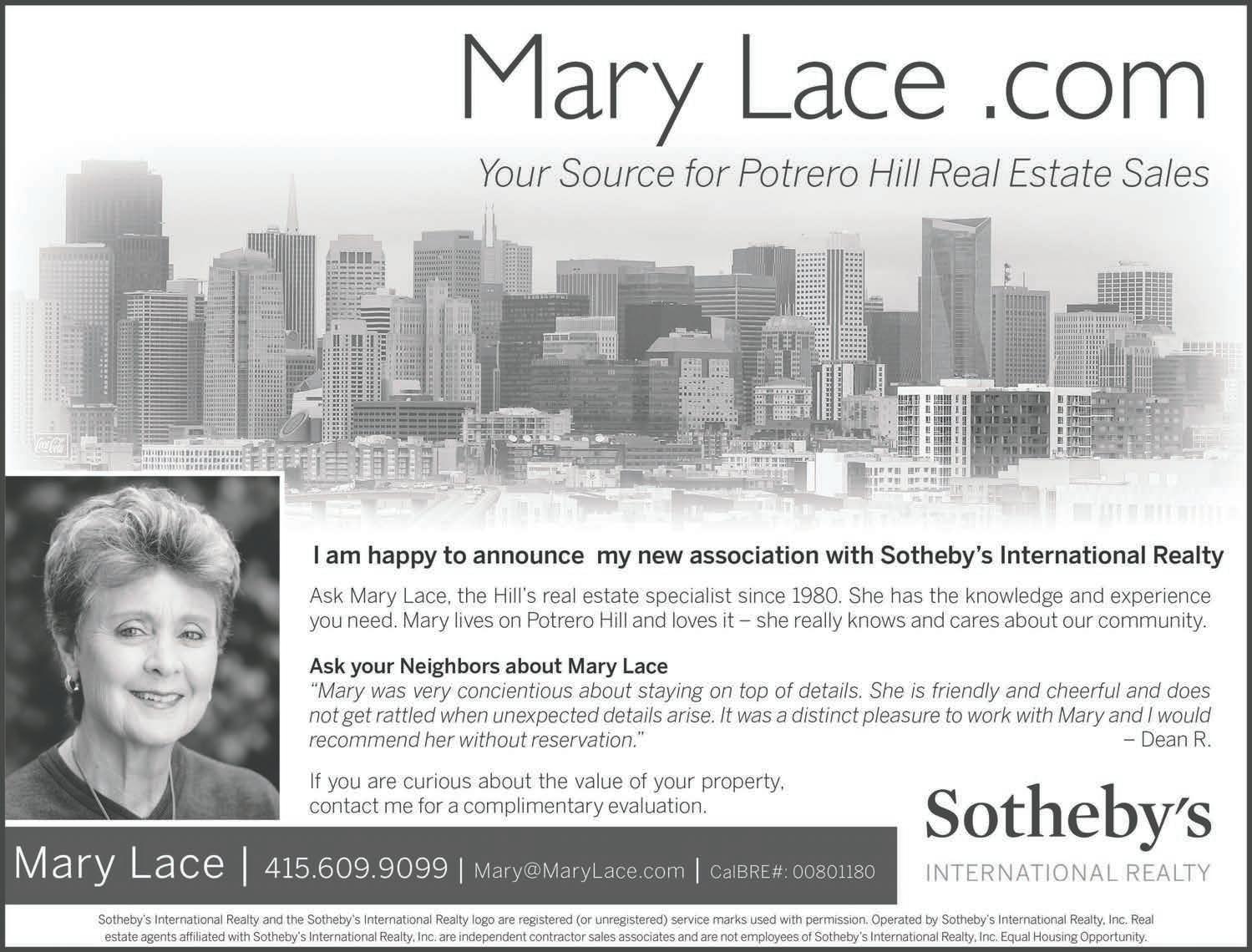
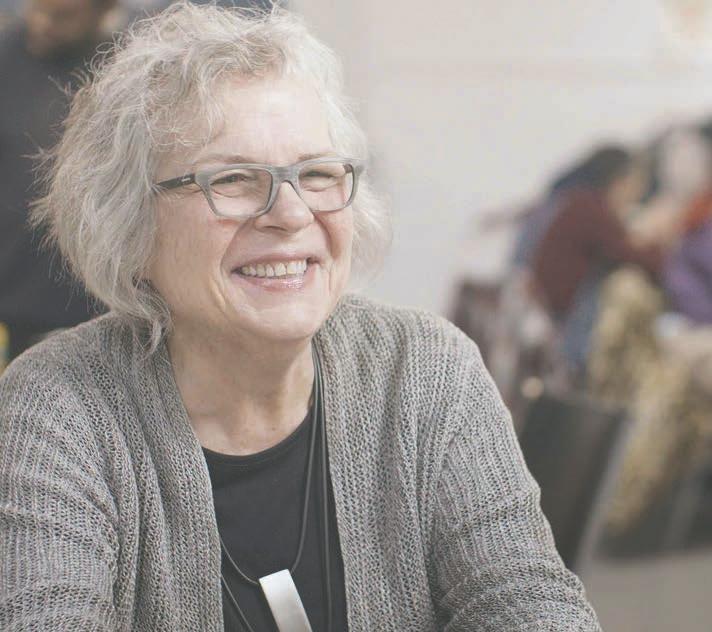
18
“Human
certainly nothing else like it in our neck of the woods.
DAY IN DOGPATCH from page 7 Showplace Square has “arrived” as a considerable neighborhood rather than just a vaguely re-conceptualized interstice between Potrero Hill and Southof-Market, known only to developers.
I recommend the seafood gyoza, which tastes like it ought to be served on the coast of Maine; and the beautifully arranged vegetarian Xian dumpling, which could almost qualify as a salad. The white-hot popularity of Dumpling Time makes sense. It signifies that
The first step to relevance in today’s San Francisco is having a restaurant so good that it inspires as much enmity as it does affection.

During a misty evening on June 8th at the Community Building Group meeting, the Starr King Elementary School cafeteria was abuzz with activity.
The architects of Block B, HKIT Architects and Y.A. Studios, presented initial design concepts and solicited input on some key elements of the overall Phase 2 development as well as specifics on Block B including the courtyard, mini-park, and child care center. Block B is a new affordable housing building in Phase 2 of Rebuild Potrero. It will be located immediately to the west of Block X, and will be bounded by Connecticut Street, a new segment of Arkansas Street, and 25th and 26th Streets. After receiving an overview of the Phase 2 and Block B designs, the architects divided the audience into small groups to hear their likes/dislikes and opinions. Participants first offered their thoughts on the look and feel of the buildings (e.g., the exterior, entrance, stoops, etc.) in Block B. Next, they placed green stickers on outdoor elements that they wanted to see in the courtyard and mini-park such as playground, seating, fitness area, and BBQ area. Lastly, they provided comments on the location and importance of having a child care center in Block B. There is currently a child care center on the public housing site. It is located in Phase 3. In order to ensure uninterrupted operation of this important community resource, child care is being incorporated in Phase 2. Results of stakeholder feedback will be reported out at a future CBG meeting.
For
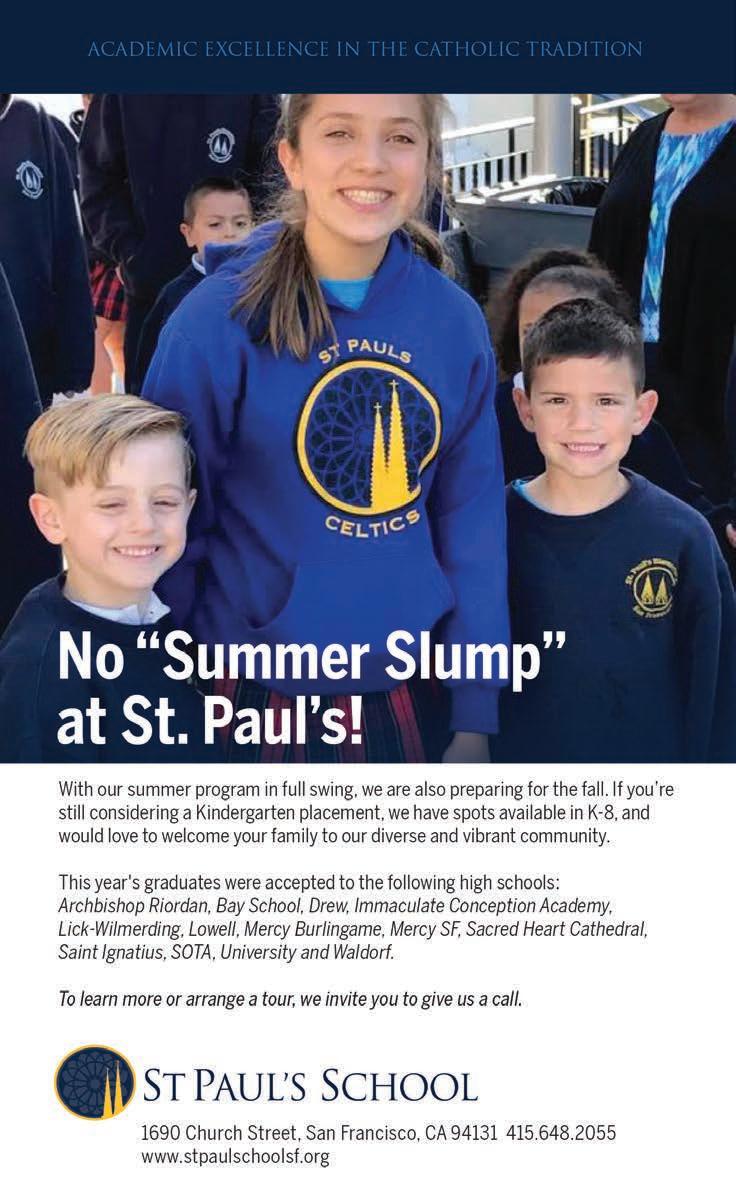

“Tell me again why we’re going to this thing,” said Nash, as he buttoned the blue collared shirt he saved for special occasions. He looked down at his chest. “Ah, shoot, there’s a stain on this.”
“Don’t worry about it,” said Justin. “Your sports coat will cover it up. Anyways, I told you, I kind of liked the guy.”
“No, you didn’t,” retorted Nash, “You thought he was a dick.”
Justin sighed, sat heavily on the bed, lit the bong on the nightstand, and inhaled deeply. “You’re right,” he exhaled blue smoke. “I didn’t like him. But I did like messing with him. He was a funny guy; not on purpose, of course. I’m going to miss that.” He patted the spot next to him. “I gotta tell you something. Come ‘ere.”
“Hang on,” said Nash. He grabbed a hand towel from the bathroom, soaked the edge of it in water, and sat down, daubing at the blemish.
“So, you know the last time we saw Pete, at the Yankee?”
“Uh huh,” said Nash, concentrating on the stain, which had turned into a tiny shallow pond with a blue-green dot in the middle.
“Well, I got him stoned before he came in.”
Nash paused his patting. “You get everyone stoned. What’s your point? Wait, do you think he fell off the bridge ‘cause he was stoned? When was the last time we walked over it when we
weren’t stoned? And, the police say it was a hit and run.”
“Yeah, there’s that…and…” Justin held a hand over his mouth, muffling the sound, “We mure ave lured him ere in ert ace.”
“What?”
“Oh,” said Justin, shifting to place both hands over Nash’s ears. “We may have lured him to the bar in the first place.” He dropped his hands. “He wouldn’t have been out at all except for us.”
“Whose ‘us?’ What’re you talking about?”
“Jordan,” said Justin, “We were chillin, maybe looking for a little illin, before you got home. Let’s be honest, that boy doesn’t know which way is up. Anywho, we decided to make some prank phone calls.”
“Prank phone calls? Who does that? What’re you, in seventh grade? Maybe you should check out Minecraft…”
“Prank phone calls have a noble lineage,” snapped Justin, “Some say they date to Jesus’ time, when people would “knock on wood” and then run away…”
Nash threw the wet towel at Justin. “Just get on with it.”
“Okay, so, we called Pete, and told him to come to the Yankee. Except, we didn’t say who we were, and we acted like we were Deep Throat, or something, using that voice thingy you gave me for Halloween. Not that Deep Throat is a bad thing, in the sense of the actual meaning of the phrase, which is

kind of confused now, given the film and the Watergate…”
Nash squinted at Justin. “You’re starting to talk like Jordan, which is a turnoff.” He got up. “So, you prankcalled Pete, he went to the bar, you got him stoned, and, later that night he was killed in a car accident. As a consequence of your bad behavior, we have to go to his funeral. I think the universe will forgive you, though I may not. Now let’s get this over with.”
Pete’s memorial service was held in St. Teresa of Avila Catholic Church’s large basement. Pete, a lapsed Catholic, had only entered the building on a couple of occasions while he was alive; once for a story he was doing on spirituality on the Hill, another time to pitch an advertisement. His sister, flying in from Michigan, had made the arrangements, choosing the basement as a low-cost, and available, alternative to the main sanctuary.
The room was half-filled when Nash and Justin entered. They were the youngest people by at least thirty years. Folding tables had been set up along the room’s edges, laden with pizza, triangular sandwiches, pastries, and coffee urns, each item announced by a hand scrawled sign, along with its source: donated by Goat Hill Pizza, Klein’s Deli, Chats. The placards featured colorful Emoji-like, though cruder, drawings; a rainbow, unicorn, and what could have been an angel or a large bat.
“Thank you for coming,” hoarse-
whispered a tall, skinny, white-haired woman wearing what looked like a narrow purple sack, who stood in the entryway, bobbing as she bent to shake people’s hands.
Justin stepped back, bumping into Nash behind him. “Is that Pete, in drag?” he mouthed over his shoulder.
Nash grabbed his bicep, and reached an arm across to grasp the woman’s outstretched palm. “Sorry for your loss,” he said, and pushed Justin into the room.
“Really,” Justin murmured, craning his neck to look at the woman. “Maybe Pete didn’t die, but just, transformed,” his voice rose as he gesticulated upwards.
“S.T.F.U,” Nash breathed through clenched teeth, steering Justin towards a table occupied by Chester and Maggie, who was talking to another couple next to her. “Sit down. Say nothing.”
Chester nodded in their direction, a full plate of diverse food items sitting untouched in front of him.
“Mind if I…” Justin said, reaching to grab a pizza slice from Chester’s plate. “You got a regular UN of cuisine going there,” he chewed. He gestured towards the food. “Except it looks like Italy might be gearing up for war with the French pastries…”
“I think I’ll get a beer,” said Chester, pushing his chair out.
“Hello, guys,” said Maggie, turning towards Justin and Nash.
GOLD continues on page 21



GOLD from page 20
“Hey,” said Nash. “Is that Pete’s sister?” He thumbed towards the door, where the skinny woman was talking to an animated City Supervisor, bobbing slightly. After furrowing her brow meaningfully, Rebecca stepped into the room, waved at no one in particular, spun back around and walked directly out.
“Yeah,” said Maggie, smiling at the Supervisor’s performance. “Her name’s Eloise. She and Pete sure look alike, don’t they? And it’s as if they went to the same school of bobbing.”
“Bob U,” quipped Nash, pursuing his lips to suppress a grin.
“Everything but the Adam’s Apple,” said Justin. He turned to look more closely. “Or maybe…”
Nash punched him lightly on the arm. Chester had returned, a plastic pint in hand. The mummering in the room had reached a new intensity, though plenty of tables remained unoccupied. Eloise was making her way to the front, toward an elderly AfricanAmerican man wearing a clergy shirt.
“Let us begin,” said the man, after Eloise arrived next to him.
After a benediction, the priest explained that, according to the family’s wishes, the service would consist of testimonials from Pete’s friends and family, the latter of which solely consisted of Eloise, who spent twenty minutes stammering out a brief history of Pete’s early life, highlighting not-that-funny incidents, all of which revolved around Pete being clumsy, which the audience fake-laughed at.
“After he moved from Michigan I didn’t see him much,” Eloise said, tapping at her eyes with a tissue. “Our parents died,” she bobbed. “Neither of us had any money for travel. Oh, and I was wrapped up in my greeting card business,” she brightened, and pointed towards the signs on the food tables. “Please, feel free to take the notes as remembrances of Pete.” She looked out at the audience, scanning the small crowd with a hopeful look. The room was quiet but for the sounds of suppressed chewing.
The priest placed a hand on Eloise’s shoulder, and ushered her to a seat in the front. “Now is the time for anyone who has anything to say,” he said, and stepped aside.
Maggie examined Chester, and placed a hand over his. “Time to make the donuts,” she whispered.
Chester got up, and shuffled to the front, nodding at the priest as he leaned over and gripped the sides of the podium.
“Pete and I were friends…For quite a long time,” he said, glancing at Maggie. “I didn’t always agree with everything he said, or published in his paper. Particularly that story about my hosing down dog owners who didn’t clean up after their animals in front of my shop.” Smiles started popping up in the room, like fire flies. “Or the one about the State Legislator taking bribes, which turned out to be an allowance from his wealthy mother. And the funny photo section, which highlighted people’s backsides, well, I’m not sure much needs to be said about that.
“But, Pete had a good heart, and his heart was with the community. He
did a lot of solid stories, and his paper helped hold us together, through all the changes, and the development. He wasn’t always right, but he was probably right more times than wrong. Many more times,” Chester paused, looked down at the podium, and back to the audience. “He had a kind of deep integrity, so deep that sometimes even he had a hard time finding it.
Pete’s dead now. More than likely, his paper is dead, too. That’s something…that’ll be missed. Both of them.” Chester nodded at Maggie, and walked back towards his table.
Each month, the View has published a chapter from Gold , a serialized tale of politics, capitalism, and corruption in San Francisco. Previous chapters can be found on the paper’s website, www.potreroview.net. Unless advertising and/or reader support can be secured for future installations, this is the final installment until the story is published in full in book form.
through bent Schedule 40 steel tubes. On view is a 3D printed model, as well as drawing and process prints. SITU Studio shows replicas and material samples from Solar Pavilion 1 and 2, commissioned for a solar-powered festival devoted to raising awareness about environmental sustainability. Solar Pavilion 1 is made primarily of recycled and waste material; Solar Pavilion 2 was meant to be easily built without expertise, and is customizable and collapsible. SITU is also represented by their design of Google Creative Lab’s New York offices, a 30,000-square foot modular, reconfigurable workplace.
“
Architectural Pavilions will be beautiful and exciting, as it offers innovative and imaginative ways of envisioning the built environment,” emphasized assistant curator Zaccheo.
Architectural Pavilions: Experiments and Artifacts is at the Museum of Craft and Design, 2569 Third Street between 22nd and 23rd streets t hrough January 7, 2018; http://sfmcd.org/
to the City.
According to Jude Deckenbach, executive director of Friends of Jackson Park, Dogpatch-based Fletcher Studio has been hired as the project’s landscape architect, and will manage the hiring of consultants through a request for proposals process to conduct the various aspects of the feasibility study. Jackson Liles Architecture, also located in Dogpatch, will be involved in early project stages. Deckenbach hopes that plans will be ready by this fall, with construction starting as early as 2020.
“We are thrilled to be working with Fletcher Studios for various reasons,” Deckenback commented. “Their outstanding work is number one, but especially relevant to the Jackson Park project is that they are also the landscape architects for the 1601 Mariposa project, which is directly across the street from Jackson. We will line up the

new Mariposa Street entrance into the park with the north-south green passageway on the 1601 Mariposa Street project to create a lovely greenway connection for all.”
NEW SCHOOL from page 15
sion schools to a campus closer to home. Davis, whose 12-year-old daughter, Olivia, is in secondary school, wants Mission Bay to accommodate a middle school. “That’s part of the long-term strategy to keep families here. This school isn’t for me. It’s for my grandchildren,” said Davis.
Following approval of the Mission Bay school resolution, the Board and UCSF expressed interest in cooperating to develop the school’s focus and curriculum. “We are very interested in collaborating with UCSF. The opportunities are limitless. We certainly could envision a close partnership where we draw on the deep resources of UCSF and its community to deliver cutting-edge educational opportunities to children at the Mission Bay school in science, technology, and health,” said Haney.
“UCSF has a rich history with the San Francisco Unified School District through such long-standing programs as the Science and Health Education Partnership. A school at Mission Bay would provide greater opportunities for our joint educational missions,” said Paul Takayama, assistant vice chancellor for community and government relations at UCSF.
“It’s an unbelievable opportunity. It’s one of the best universities in the country. What they could add from a science perspective could make the school unique,” said Garcia.
“I think one of the most special things about this school will be that it will be literally in the backyard of UCSF. It feels perfect to develop STEM
education at the campus, using some of the space for broader educational purposes,” said Sarah Bertram, parent of a toddler and a Mission Bay Families member.
San Francisco Police Department, San Francisco Association of Realtors, and San Francisco Chamber of Commerce to achieve these goals. “We’re always willing to work with anybody on any issue. We run everything by our members first. In addition, we build coalitions with other unions, including the San Francisco Building Trades Council, the San Francisco Labor Council, and political candidates who support the public sector workforce,” said Courtney.
Local 261 actively supported Senate Bill 1, passed by the California Legislature last April. The legislation, which will take effect in 2018, increases gas taxes and fees as a means to raise tens of billions of dollars for transportation projects. Many of the ensuing plans will likely be undertaken by contractors that hire union members, including Local 261 members.
“Primarily, we just want to serve the citizens. We’re there to meet the needs of the people. When men and women are able to support their families and retire with dignity, justice, strength, and honor, that’s amazing,” said Foglio.

Store Systems Analyst
(San Francisco) Store systems analysis providing tech. develop. & maintenance of store systems applications, incl. point of sale, for n’tl retailer. Identify req’ts & translate into tech. spec.s , test results docs utilizing application & system test methodologies & tools. Automate software installation, develop system & app monitoring solutions in highly distributed environment. Reqt’s: Bach in Comp. Science or Comp. Engineering or foreign equiv. degree, & 3 yrs exper in job or 3 yrs exper as retail domain technology analyst. Email resume/references to kelly.wilson@ charlotterusse.com. Charlotte Russe, Inc.
Business Intelligence Developer
(San Francisco) Work with bus. users to id. reqt’s; utilize tech solutions; create rp’ts in bus. objects incl. web & desktop intelligence. Reqt’s: Bach in Electronic Engineering or Comp. Science foreign equiv. degree, & 2 yrs exp in job or 2 yrs alt. occupational exp in bus. intelligence programmer analyst duties. Email resume/references to kelly.wilson@charlotterusse.com. Charlotte Russe, Inc.
Company Retreat Space
Gorgeous, rustic, Muir Beach space and stunning Mission Dolores home available for day rentals. Perfect for six to 10 people engaged in retreats of all kinds: writing, yoga, team-building, strategy sessions. $1,500 to $3,000 a day. Editor@ potreroview.net; 415.643.9578.
LOOKING FOR A GARDENER? We are a small full-service landscape and garden company specializing in residential design, construction, maintenance and consulting. http://www.shapeoftheearth.com Call David @ 415.846.7581
Housekeeping
CLEANING PROFESSIONAL 30 years experience. Apartments, homes or offices and apartment buildings. Roger Miller 415-794-4411 References upon request.
Muir Beach Vacation Studio
Walking distance to the beach, with the crashing waves visible and audible from the place. Includes kitchenette and lovely patio. Minimum two nights: $150/weekdays; $200/weekends; $250/holidays. Editor@potreroview.net; 415.643.9578.
Muir Beach Vacation Home
Walking distance to the beach, with the crashing waves visible and audible from the place. Three bedrooms, two baths, with a lovely deck. Minimum two nights: $450/weekdays; $500/weekends; $550/holidays. Editor@potreroview.net; 415.643.9578.
Photography Consultant
Experienced photo technician, specializing in in-home/studio archiving and le management. Call 826.266.7587, for Sam.
Subscribe to the View! Annual Subscription: $48.
Contact us at: 415.643.9578 editor @ potreroview.net advertising @ potreroview.net
NEW BUILDING from page 4
satisfy that by producing 40 percent of the units as two-bedroom units,” said Eppler. “Invariably the first iteration of a project would have 40 percent of those units be two-bedroom units. What we’ve been able to do is move projects on average to having roughly 45 percent of the units be multi-bedroom units and five percent of those units be threebedroom units.”
Eppler acknowledged that a threebedroom unit “doesn’t automatically mean that a family pops up there . . . but, if you don’t build those units, you permanently foreclose the ability for a family to be there. We want to maintain a diverse neighborhood, and a diverse neighborhood means being able to house people at different stages in their life.” The Knox boasts 52 two-bedroom units and three three-bedroom units.
According to Eppler, problems remain, despite the Boosters’ best efforts and Trumark Urban’s cooperation. A dispute with neighboring Sierra Heights, whose residents claimed that their views were blocked by the new construction, went unresolved. Given plans that’ve emerged for a 250-unit development at 790 Pennsylvania Avenue, a site geographically unsuited for ground-floor retail, Eppler wishes that he’d pushed for more than 600 square feet of retail at The Knox.
“This project came at an interesting time in the neighborhood’s learning curve, and I think it did some things well, and I don’t blame the project for the things it could have done better, because the neighborhood was learning
Outreach Ads July 2017
CONCESSION OPPORTUNITIES AT SAN FRANCISCO INTERNATIONAL AIRPORT
San Francisco International Airport is accepting proposals for the following concession opportunities:
International Terminal “A” Food Hall and Café Concession Lease
International Terminal “A” Historic Restaurant Concession Lease
International Terminal “A” Coffee Kiosk Concession Lease
how to deal with large projects at the time,” he summarized.
Trumark Urban designated The Knox, though more than a block west of the Interstate 280 overpass, a “community in Dogpatch,” with a website, knoxdogpatch.com. Accordingly, the developer’s expressions of concern for the surrounding green infrastructure hewed closer to the waterfront than to the Hill’s southside, with a $10,000 gift to the playground at Woods Yard Park at 22nd and Indiana streets, and a donation toward the formation of the Dogpatch & NW Potrero Hill Green Benefit District, even though The Knox falls outside its jurisdiction.
As part of the 790 Pennsylvania project, a soon-to-be-constructed public staircase is expected to link 22nd and Texas streets to the Potrero Hill Recreation Center. With the pedestrian steps in place, The Knox residents will be closer to that facility than any of Dogpatch’s open spaces. However, The Knox – being ostensibly in Dogpatch nonetheless – hasn’t offered financial support for the prospective outdoor stairway or the vast Hill park above it.
In Dogpatch proper, Devcon Construction is putting the finishing touches on Abaca, an AGI Avant project designed by Fougeron Architects, at 2660 Third Street between 23rd and 24th streets. The building opened last month, with final construction expected to be completed soon. At this 263-unit apartment community, monthly rents start at $2,800 and go up to $5,875. The 34 BMRs include
NEW BUILDING continues on page 23
Proposals will be received through the Airport’s RFP Web Portal from 2:00 p.m. on Monday, July 3, 2017 until 2:00 p.m. on Friday, July 7, 2017. Small, local and disadvantaged businesses are encouraged to participate.
For more information visit www.flysfo.com/business-at-sfo/current-opportunities or contact Revenue Development and Management at 650-821-4500.
CONCESSION OPPORTUNITIES AT SFO
SFO is accepting proposals for the International Terminal Boarding Areas A and G Newsstand and Specialty Retail Concession Leases. The Request for Proposals includes 3 Newsstand Leases and 2 Specialty Retail Leases.
The proposed minimum annual financial offers range from $210,000.00 to $1,200,000.00. Terms are seven years. Rent shall be the higher of the Minimum Annual Guarantee or the sum of the percentage rent structured as follows: 12% of Gross Revenues achieved up to and including $500,000.00; plus 14% of Gross Revenues achieved from $500,000.01 up to and including $1,000,000.00; plus16% of Gross Revenues achieved over $1,000,000.00. Small, local and disadvantaged businesses are encouraged to participate.
Proposals will be received through the Airport’s RFP Web Portal from 2:00 p.m. on Monday, July 3, 2017 until 2:00 p.m. on Friday, July 7, 2017.
For more information, visit www.flysfo.com/business-at-sfo/current-opportunities or contact Clarissa Mamaril at 650.821.4500 or via e-mail at clarissa.mamaril@flysfo.com
The Assessment Appeals Board resolves legal and value assessment issues between the Assessor’s office and property owners. We have three vacancies on Board 1, which oversees all downtown properties – high rise residential, office, commercial, hotels. Board 1 also oversees all properties over $50 million in assessed value throughout the City.
Assessment appeal hearings are quasi-judicial, conducted in a manner similar to a court setting, with evidence and testimony presented by the parties. The Board then evaluates the evidence and testimony, and renders its decision.
To be eligible, you must have a minimum of five years professional experience in California as either a: (1) public accountant; (2) real estate broker; (3) attorney; or (4) property appraiser accredited by a nationally recognized organization, or certified by either the Office of Real Estate Appraiser or the State Board of Equalization.
For more information regarding the Assessment Appeals Board call (415) 554-6778.
Over 100 sites throughout San Francisco are serving free lunches and snacks to anyone age 18 and under every weekday through August 18. No registration or proof of need is required: show up at a site during designated serving times and you will be served a free lunch and/or snack. Find a site near you at www.dcyf.org!
Everyone is invited to join the Department of Elections and the Public Library in celebration of National Disability Voter Registration Week and the exhibit “Patient No More: People with disabilities securing civil rights.”July 18 beginning at 5:00 pm at the Main Library 100 Larkin Street.
studios, one-bedrooms, two-bedrooms, and three-bedrooms, with prices set between $991 and $1,391 a month.
Per-unit square footage at Abaca range from 405 to 1,125. The building features a rooftop deck; fitness center; and clubhouse with a bar and kitchen installed by KRBS, the back-of-thehouse designer for restaurants like Quince and State Bird Provisions. The gym opens directly onto the coffeehouse-lobby in an effort to create an atmosphere of vibrancy and activity immediately upon entrance. Like The Knox and Rowan, Abaca privileges cycling over driving, with 55 percent of units receiving an automobile parking space in the garage’s stacked automated parking system, and 100 percent getting indoor bike rack storage. As with the other developments, it awaits a tenant for its ground-floor retail area. The structure’s layout is like an enlarged, six-story version of The Knox: a horseshoe slung around an internal courtyard with grills, plants, and patios.
What makes Abaca unique is the story it tells about Dogpatch’s past, and how it incorporates this tale into the building’s design through features that may occasionally seem frivolous or literalistic but, in the end, create a stronger sense of place than similar developments are typically able to. Also known as “Manila hemp,” abacá is a fiber that was processed by the Tubbs Cordage Company. Occupying the former Tubbs site, which in the 19th century was waterfront property,
Abaca has sought to incorporate its location’s history into virtually every planned detail: the rope chandelier that strings maritime lighting above the ground floor; the climbing rope in the gym; the wallpaper composed of pages from port histories and old shipping records.
The building’s exterior pays homage to Dogpatch’s earliest days through its color scheme – blue on the section facing Third Street, which was then still part of the Bay; green fronting a former marsh; and red pointing toward the neighborhood’s historic residential district – and to its more recent industrial past through the corrugated metal panels applied to its façade. The structure is loosely chopped into three linked blocks, the most oddly shaped and least rectilinear of which fronts Third Street. It looks like a massive watercraft.
Most significantly, a wooden boardwalk mimicking what the Tubbs Cordage Company used to load its products directly from its manufacturing plant onto ocean-bound vessels has been replicated, as a public service, to form a connection at Tubbs Street between Tennessee and Third streets, an open mid-block passage, designed by Fletcher Studio, that’ll lead to a small plaza on Third with an instructional rope installation, where passersby can test their nautical knot-tying skills. The project is amiable in part for its sense of fun, but it also valuably signals the need for more solutions to the pedestrian-unfriendly Dogpatch streetscape, whose north-south blocks can sometimes feel a mile long on foot.
Abaca’s floor plans – which include a collection of two-story townhomes – are perhaps the most interesting of these three new buildings. The model townhome on display for prospective renters opens directly onto the Tubbs Boardwalk, and at first resembles a narrow but vertically spacious onebedroom apartment. Yet a discreet set of concrete steps leads up to an amusingly tiny, garret-like bedroom with its own full bath on the second floor. Even more intriguingly, the structure has three “transformer studios,” installed as a “project within a project” by a separate designer, which feature movable walls that tenants can arrange and rearrange at will, forming any variety of configurations.
Like Trumark Urban, AGI Avant made a contribution toward the formation of the GDB, into which it’ll pay about $24,000 a year. And, similarly, it worked to achieve design approval from DNA, erecting a requested privacy screen between Abaca and the adjacent Hells Angels clubhouse. But, ultimately, its investment in the neighborhood – which also involved the addition of sidewalks and streetlights to lower Tennessee Street – wasn’t only a civic endeavor but an imaginative one.
The closeness to Caltrain is a blessing and a curse for The Knox and Abaca. They both run the risk of becoming self-enclosed commuter hubs, like gated suburban communities, for Silicon Valley techies who only nominally want to be San Franciscans. But The Knox, which sits across a sevenlane freeway from the neighborhood to which it supposedly belongs, has
the greater danger of isolation, while Abaca seeks artistically to ground its residents in Dogpatch, its gritty past and innovative present. Where Rowan’s solution to community integration is to fortify itself in concrete and wait for the Mishpot’s northern end to gentrify, Abaca embraces its place with a respect and affection made visible through its design, whatever its merits or flaws otherwise, creating the possibility of inspiring its tenants to participate in public life.
All three buildings take cues from the Hill’s and Dogpatch’s famous industrial character. Rowan is a considerable, uncompromising, artistic instantiation of the stratification, cruelty, and pleasure of industrial society. The Knox tempers its right angles and smooth planes with organic hues, as if in conciliation to the gentle, family-friendly neighborhood sitting just above it. On some level, it knows it’s actually in Potrero Hill. Abaca locates its aesthetic vision in specificity: conceptually, it sits not just in industrial Dogpatch, but within its maritime history and the particular industries that animated its old waterfront, and it presupposes a continuity among San Francisco’s past, present, and future in which even renters can take pride.




















